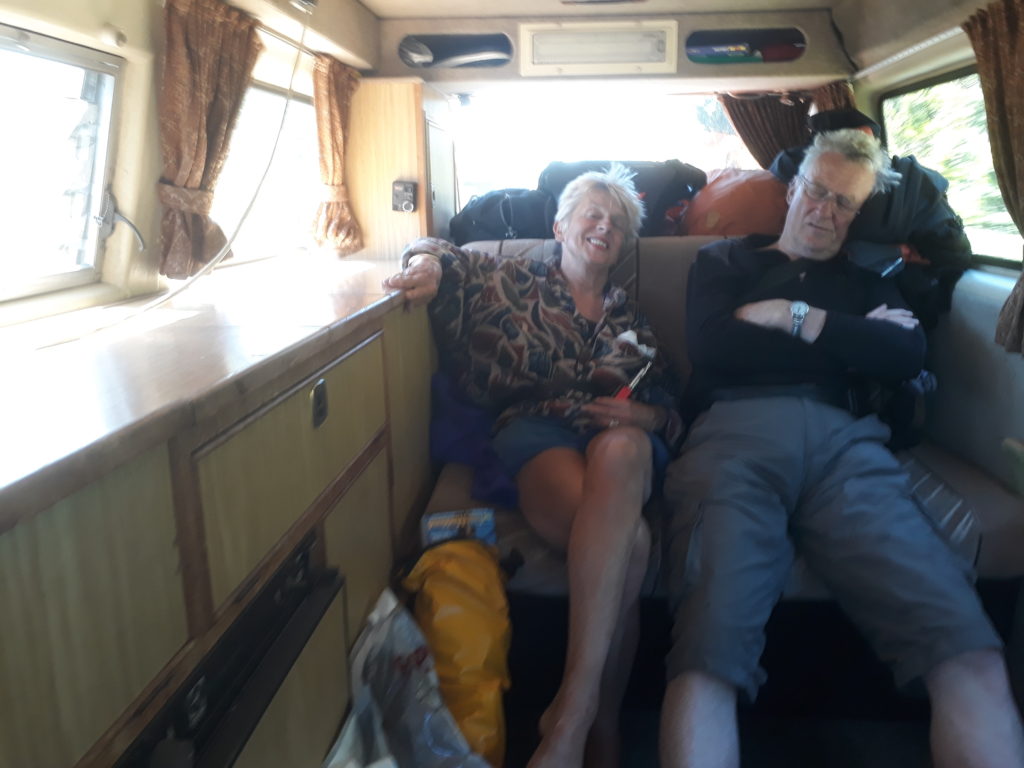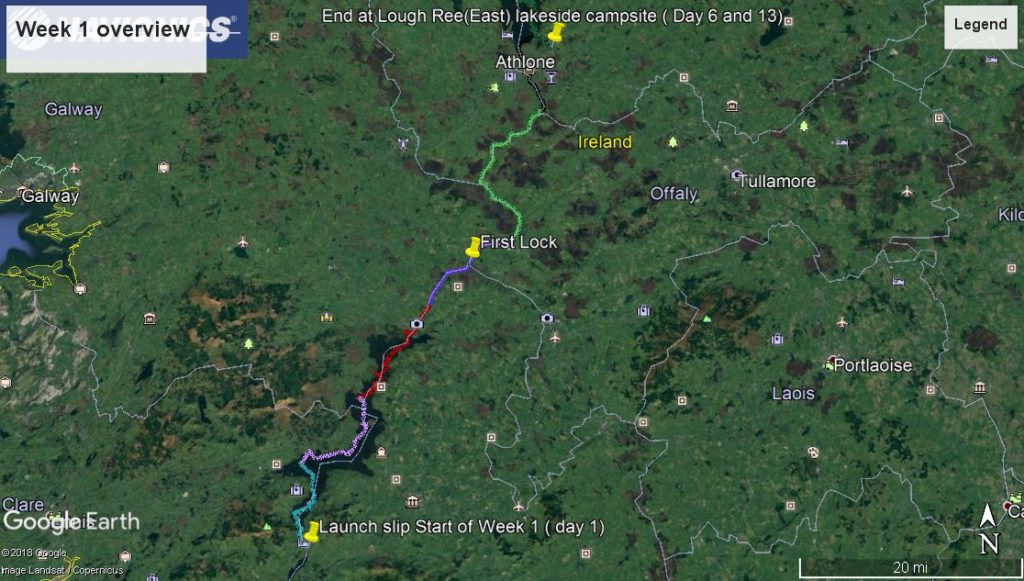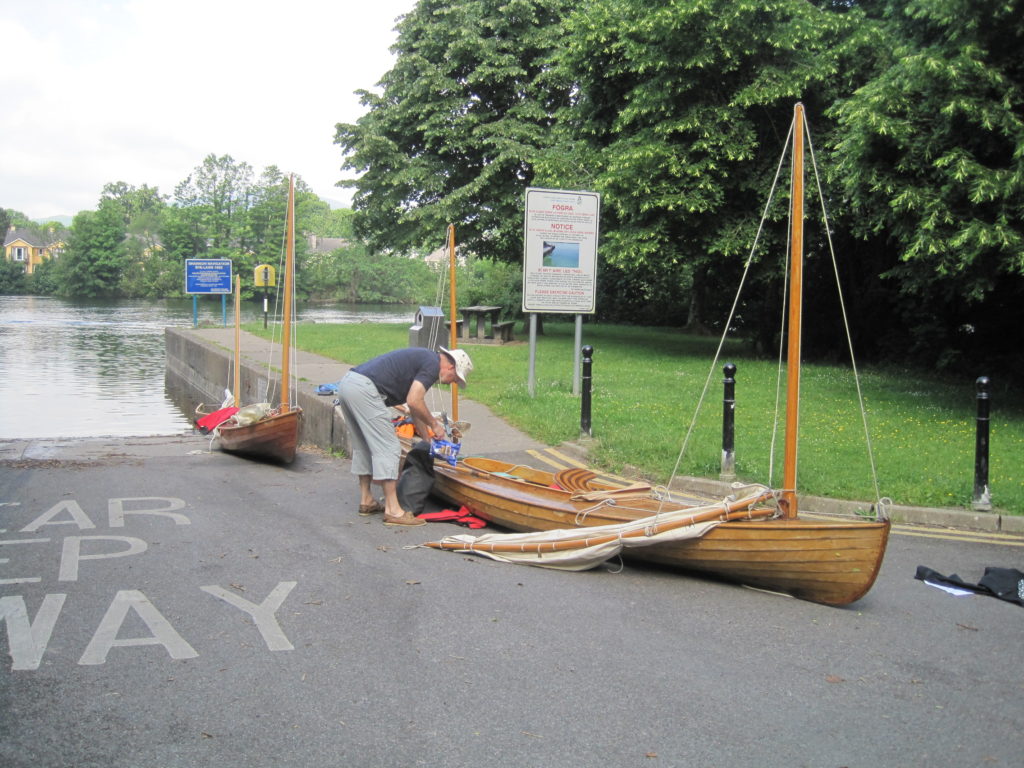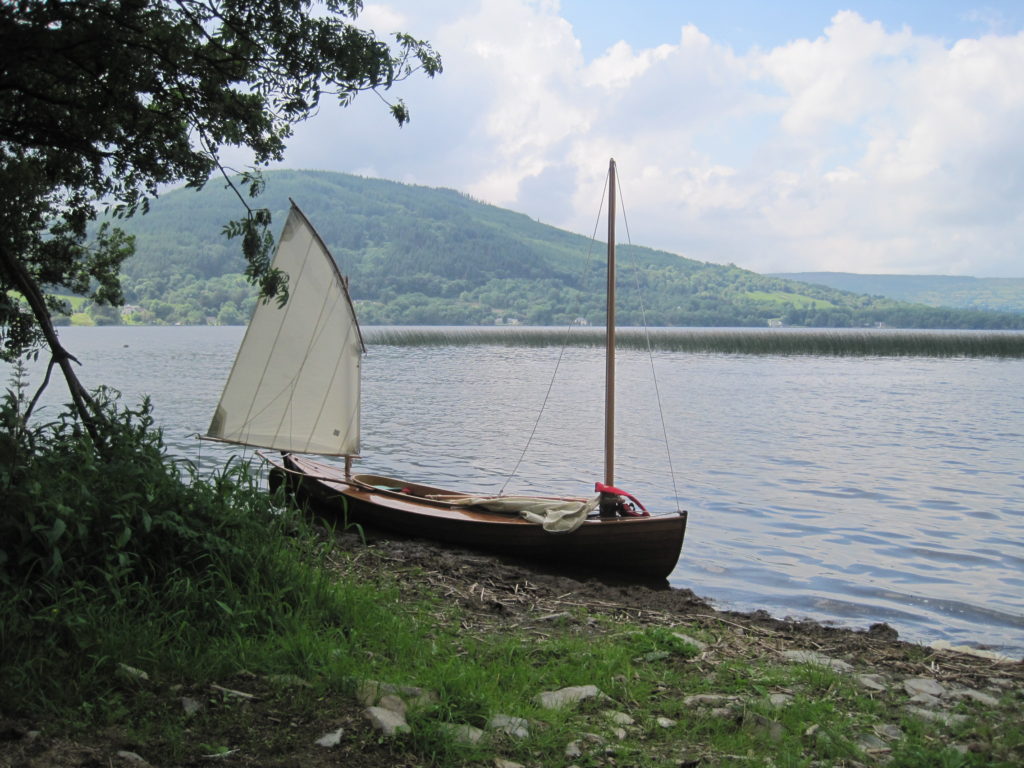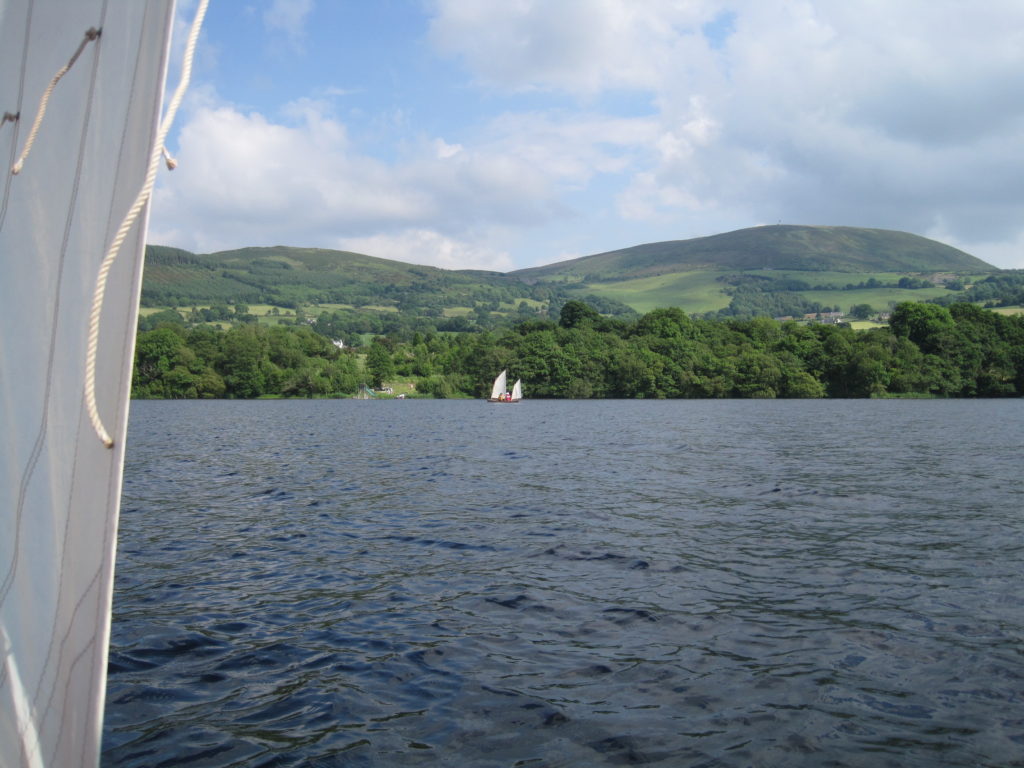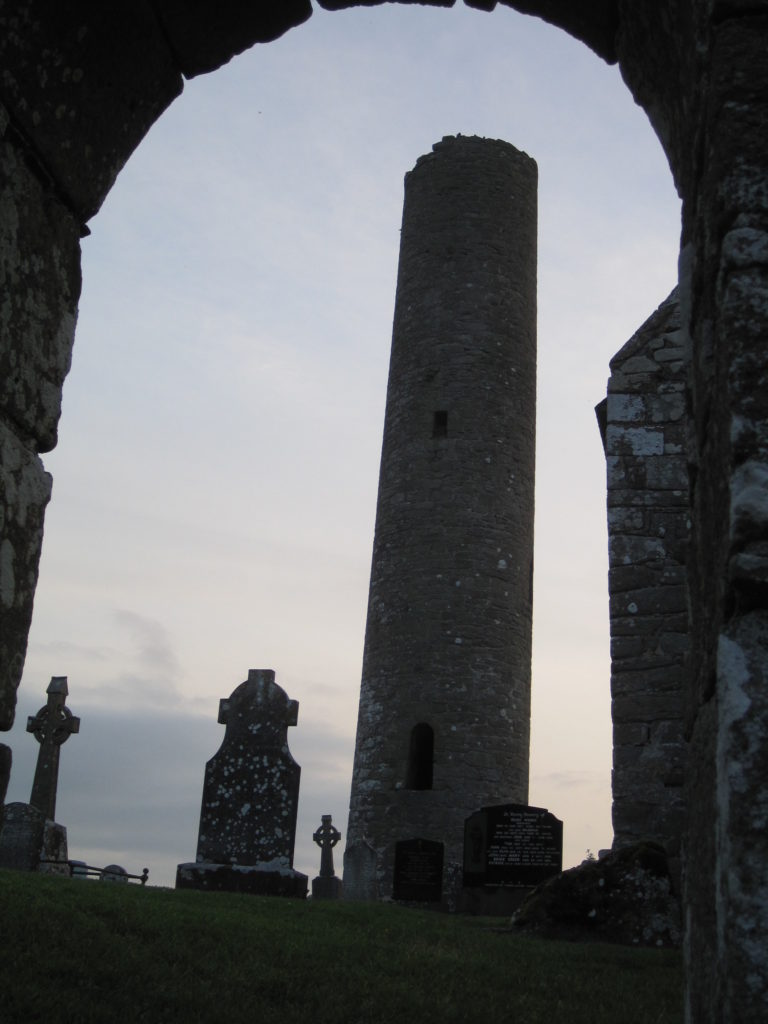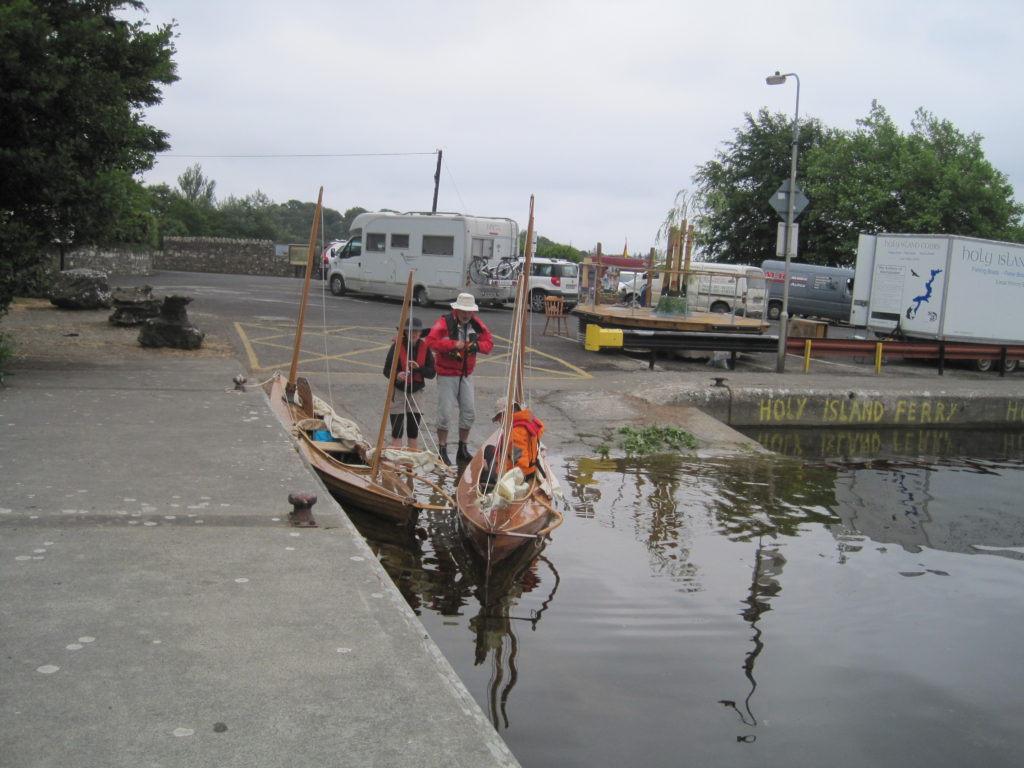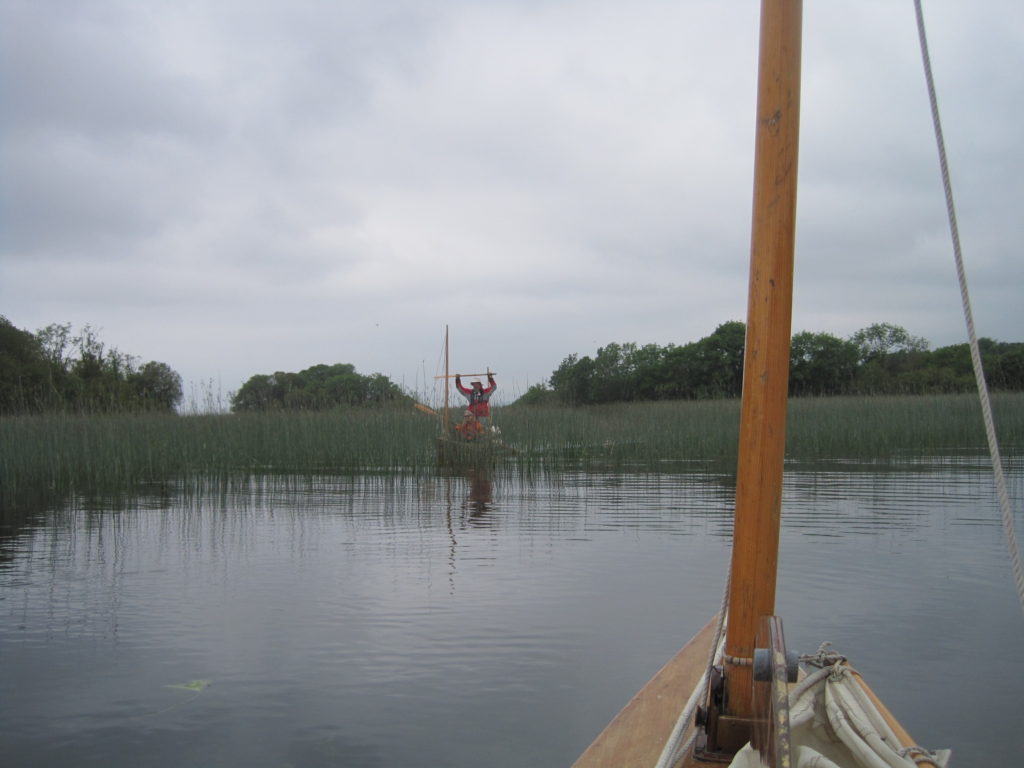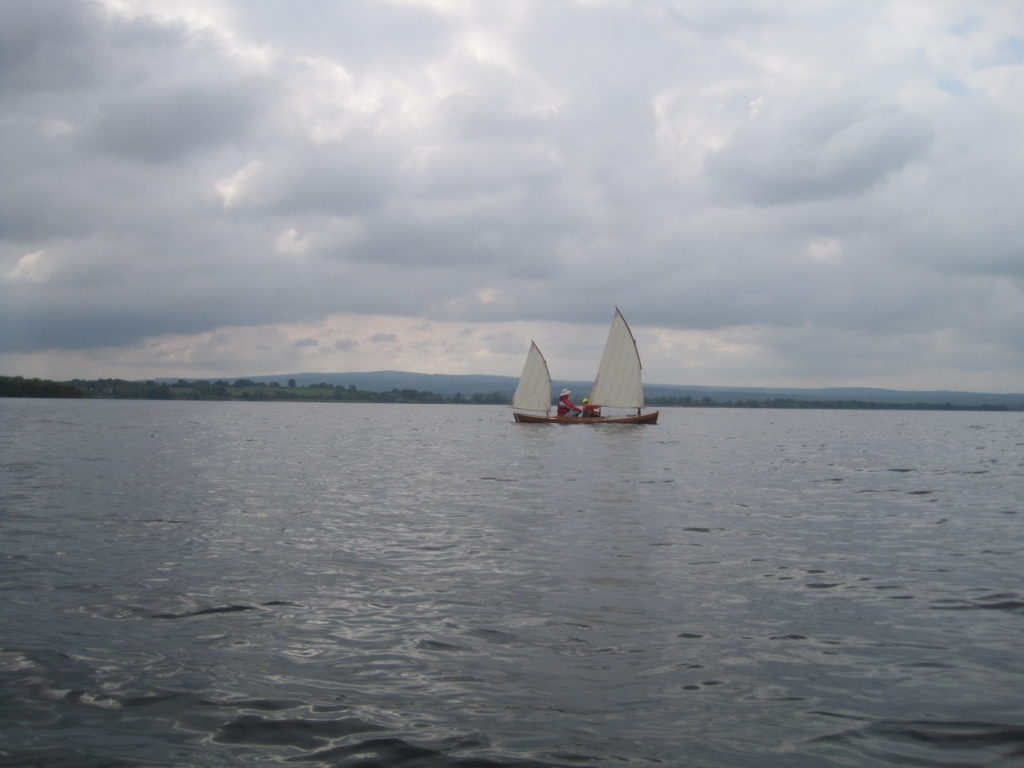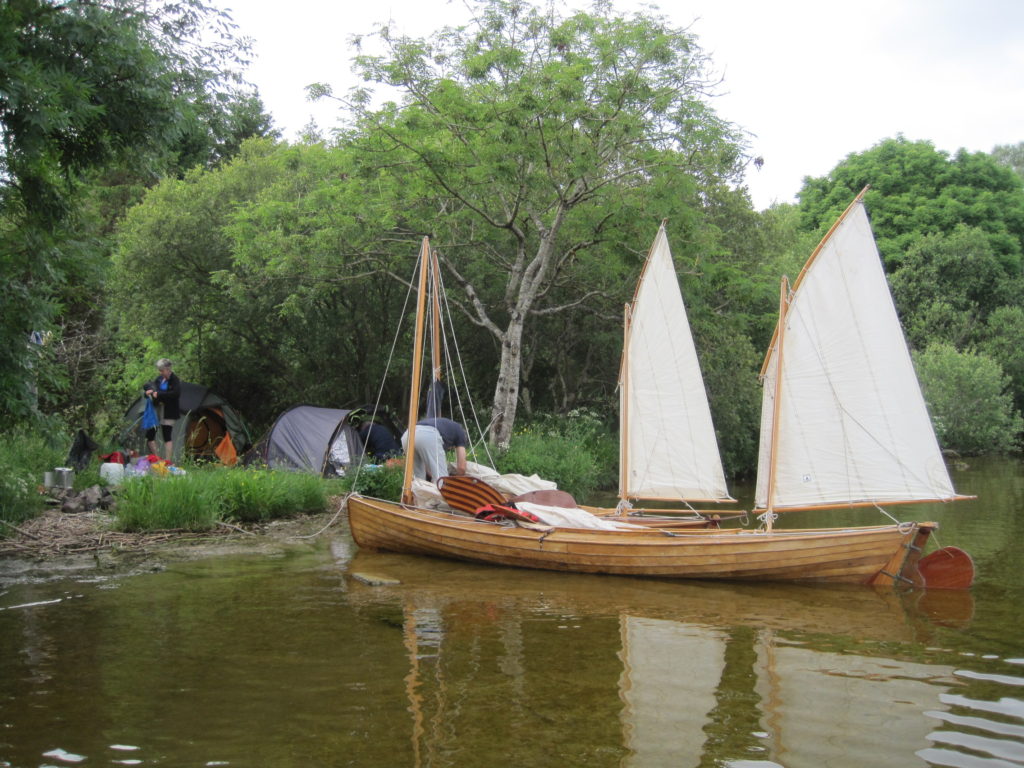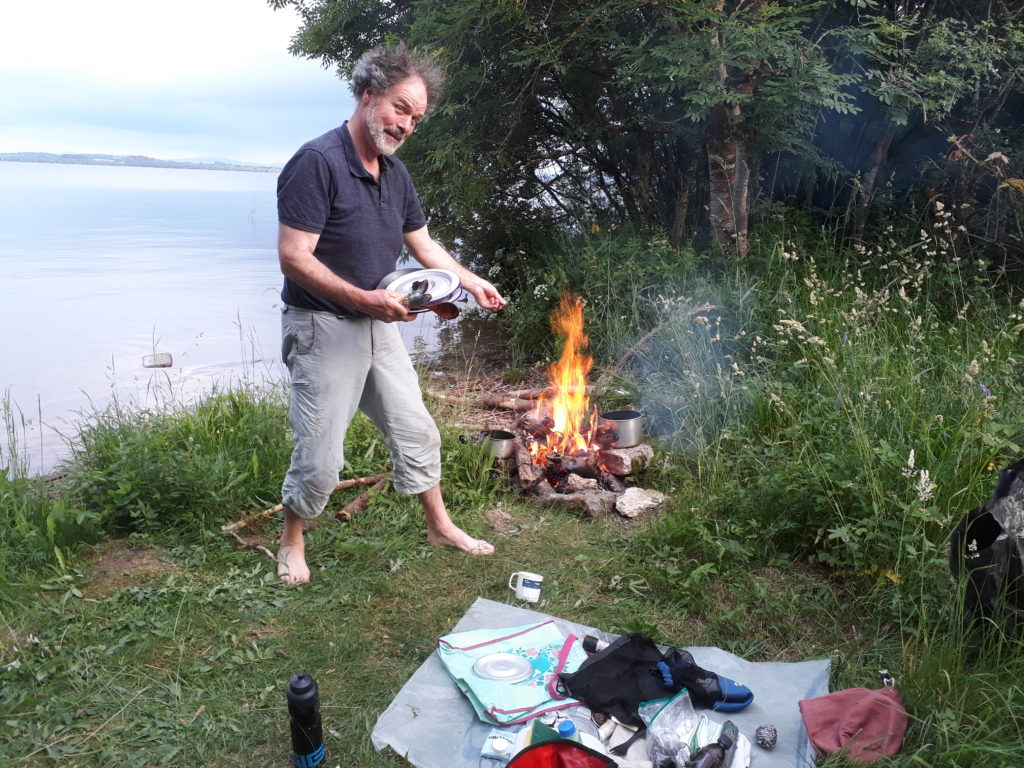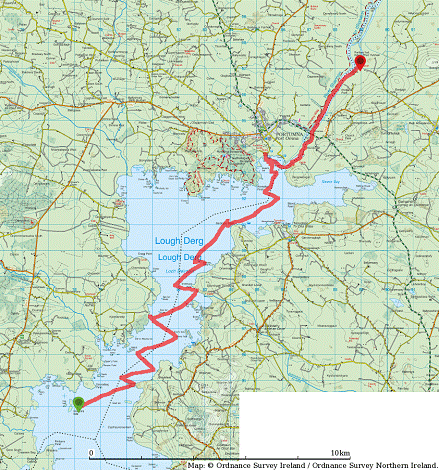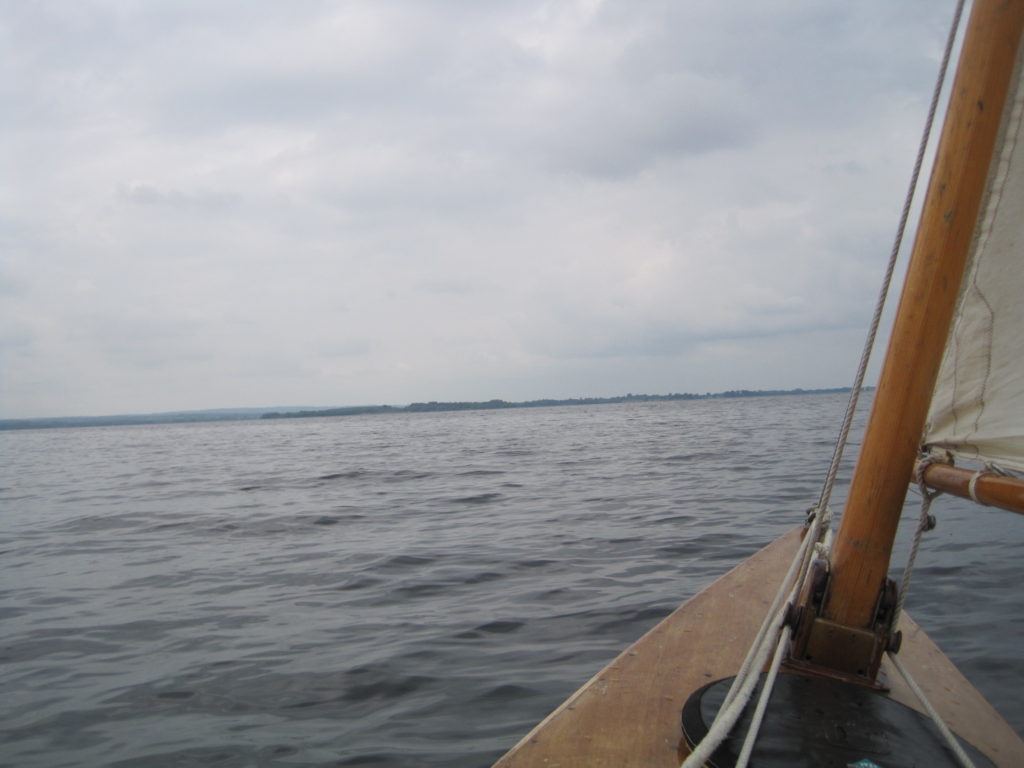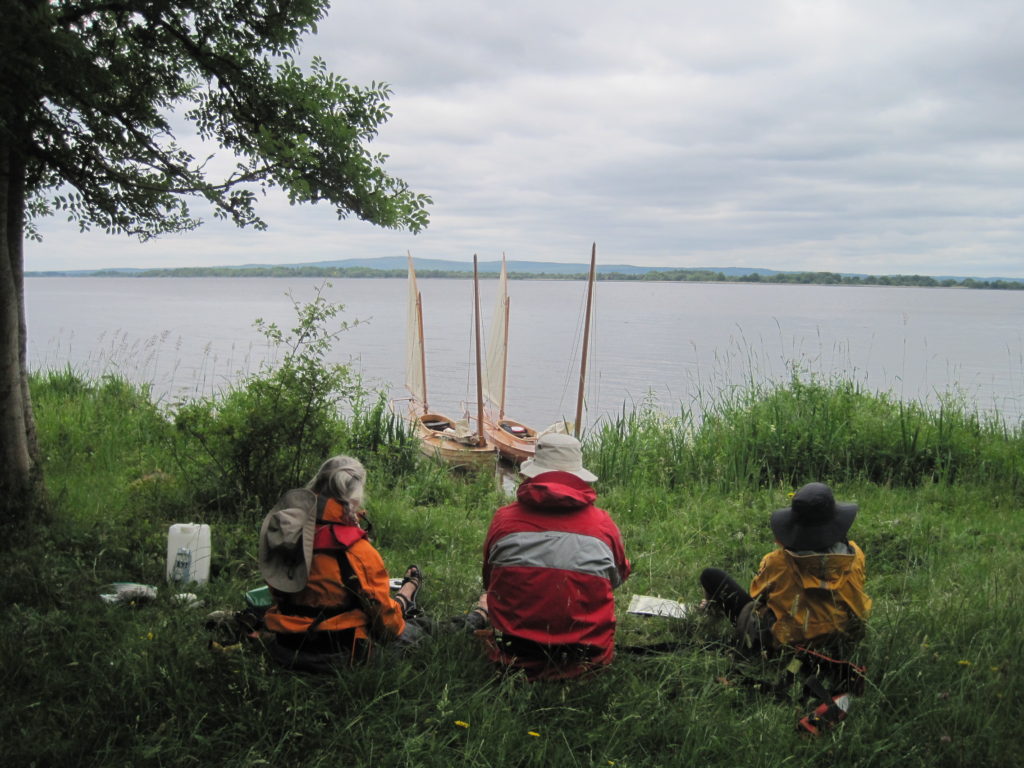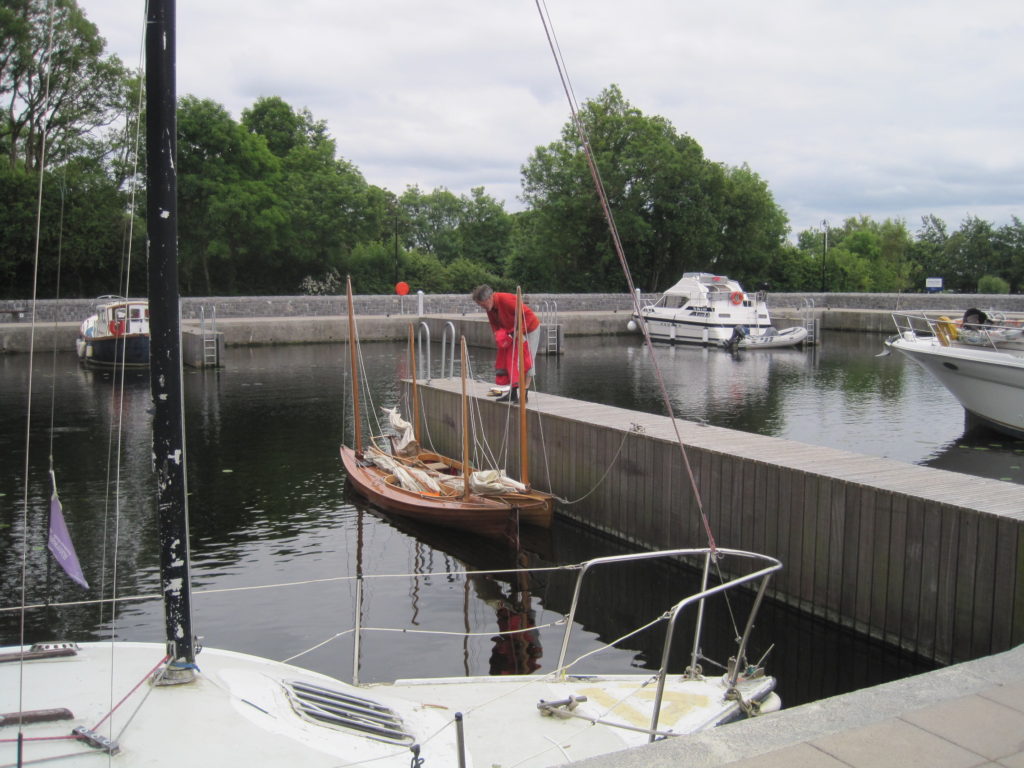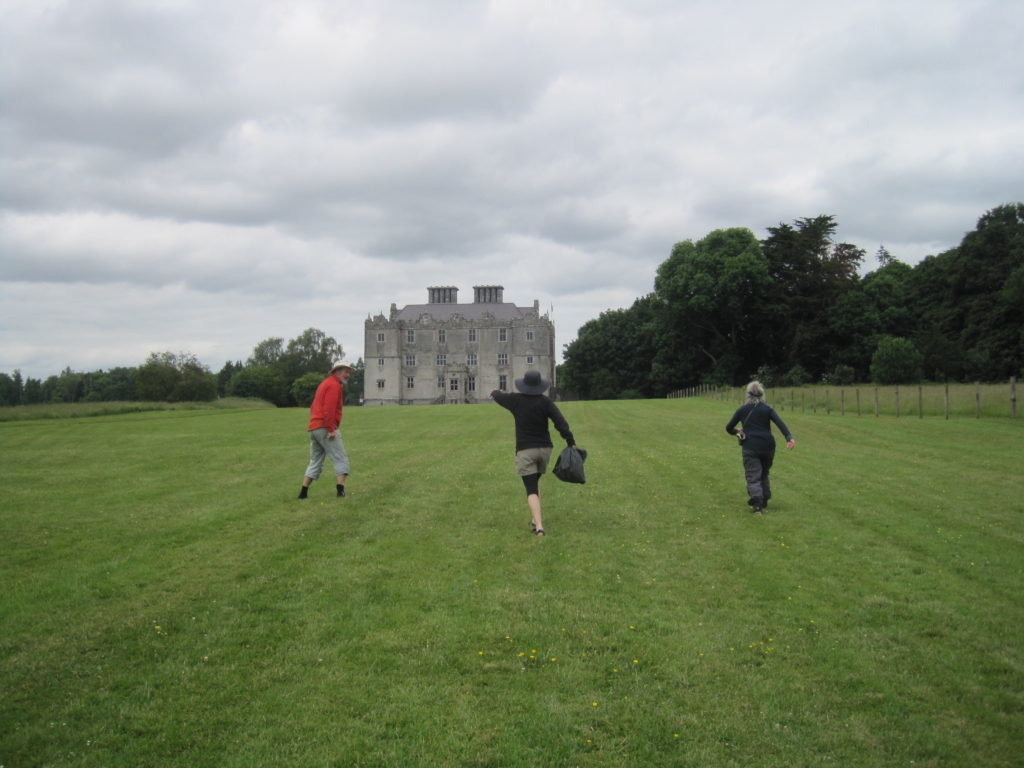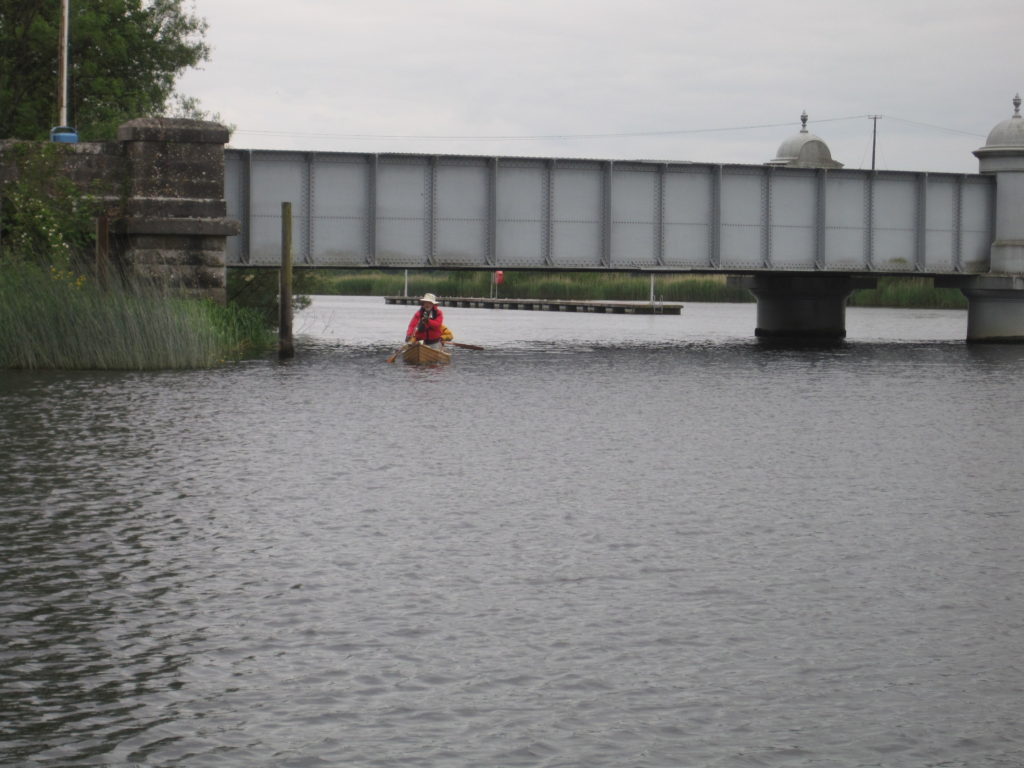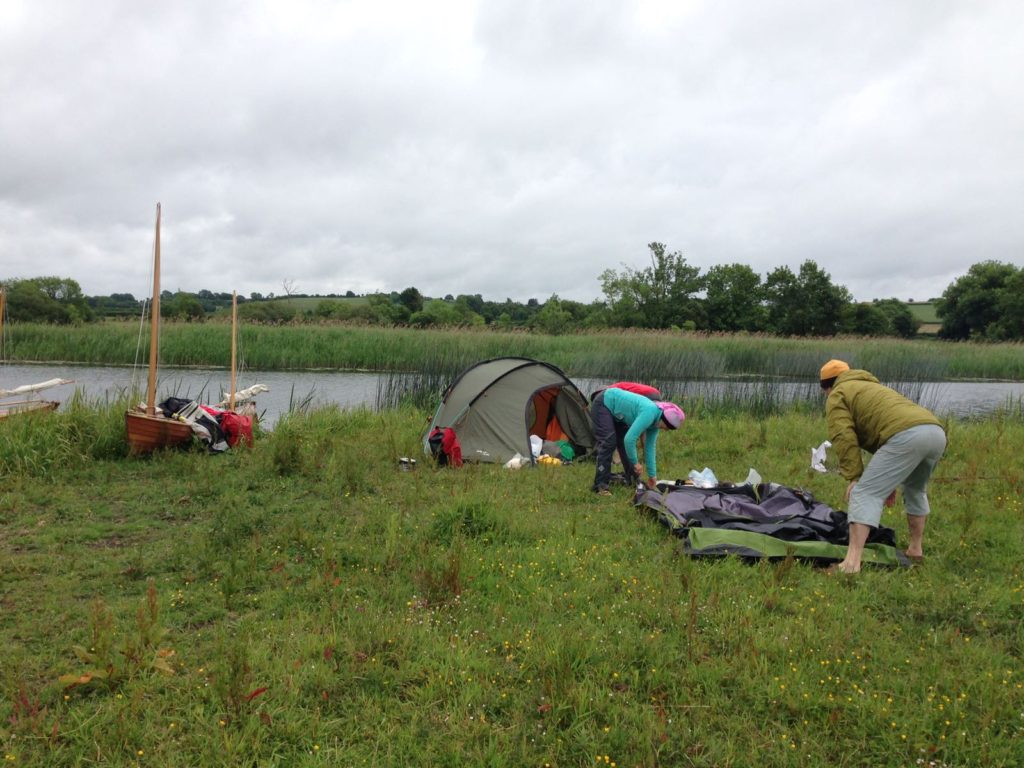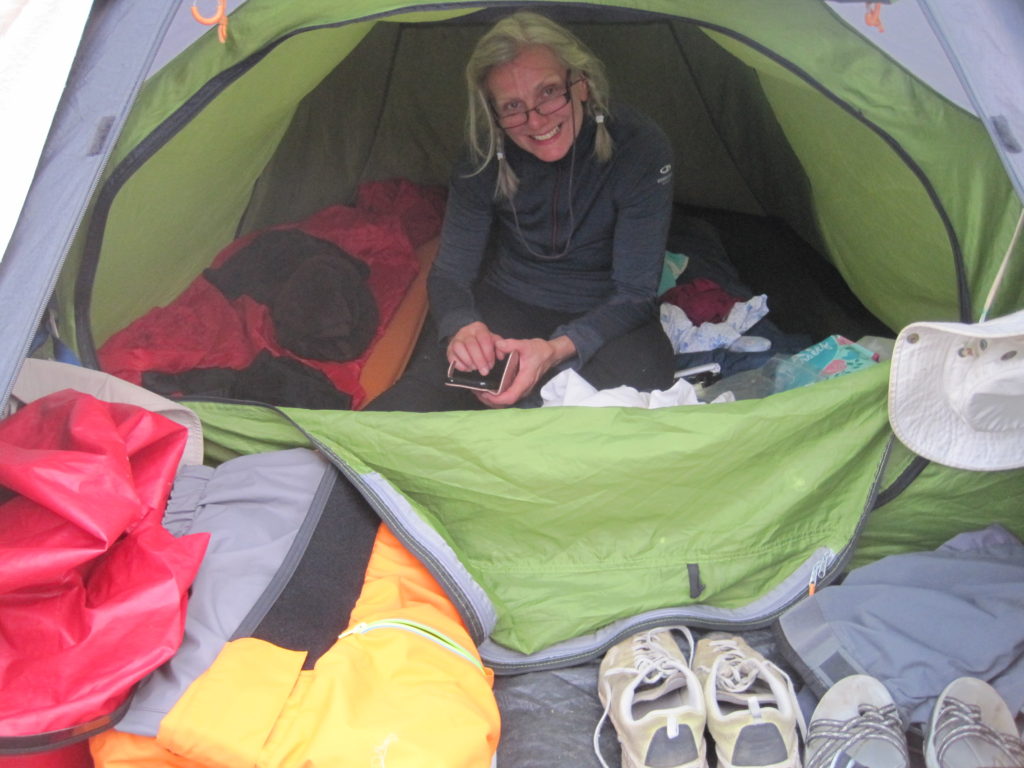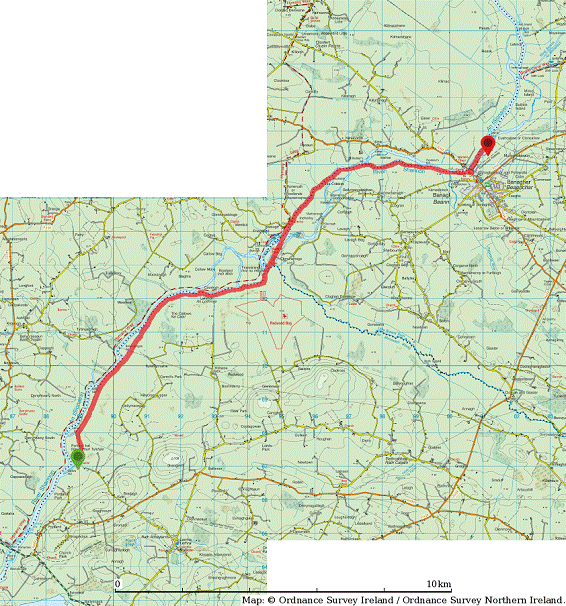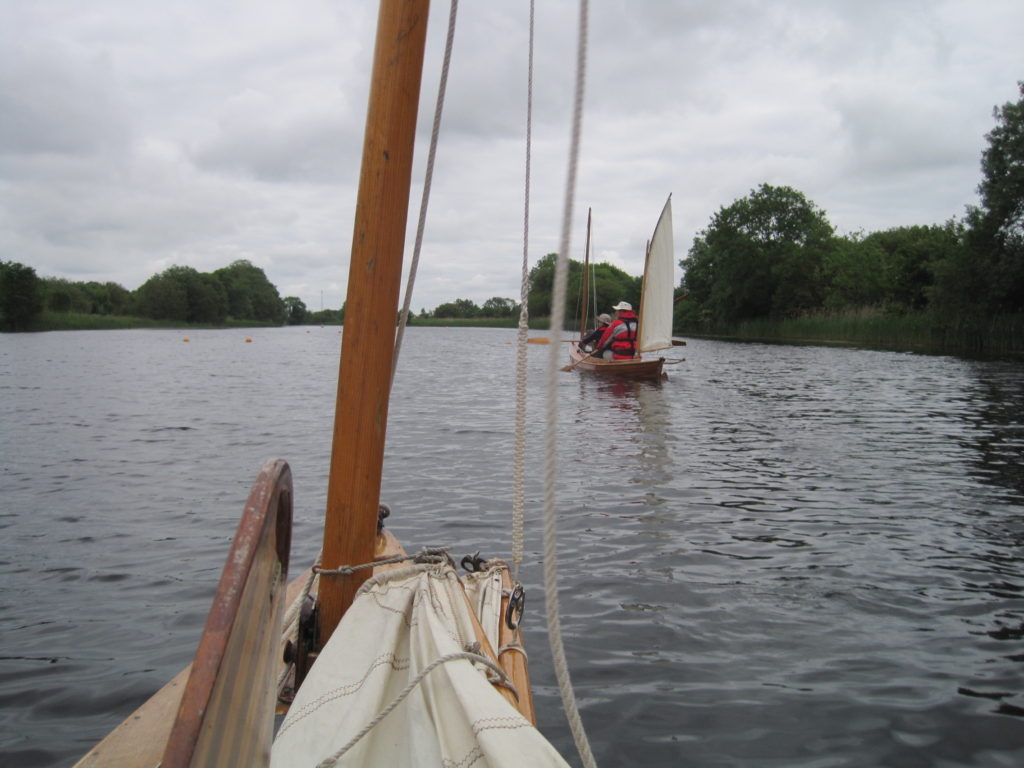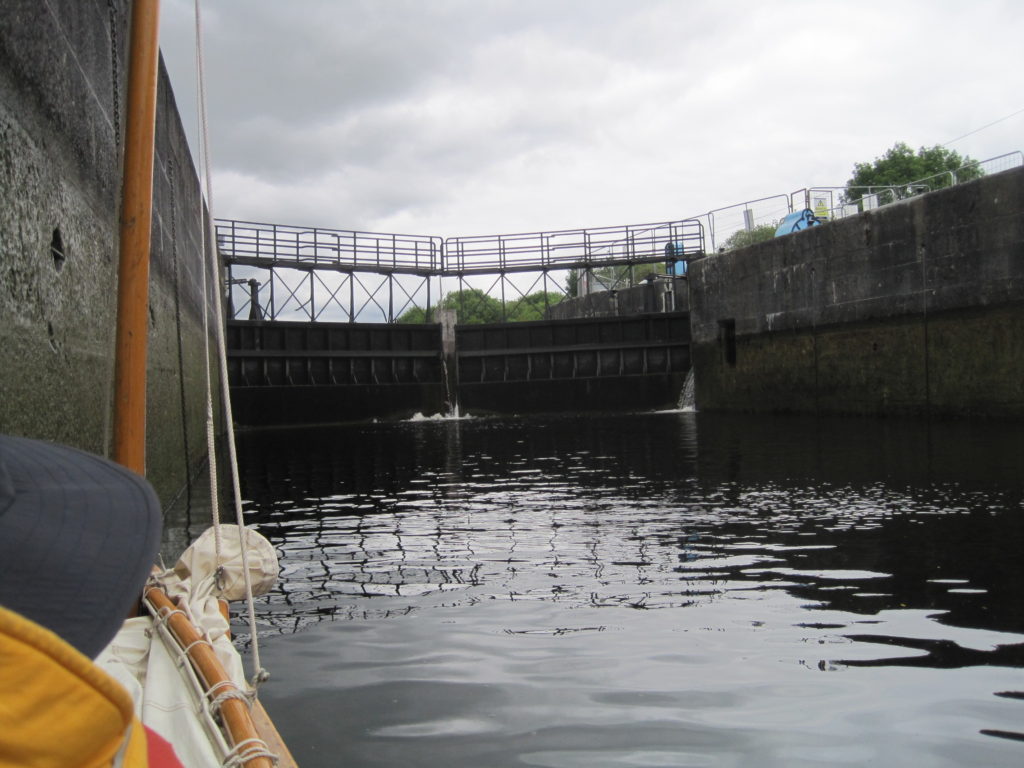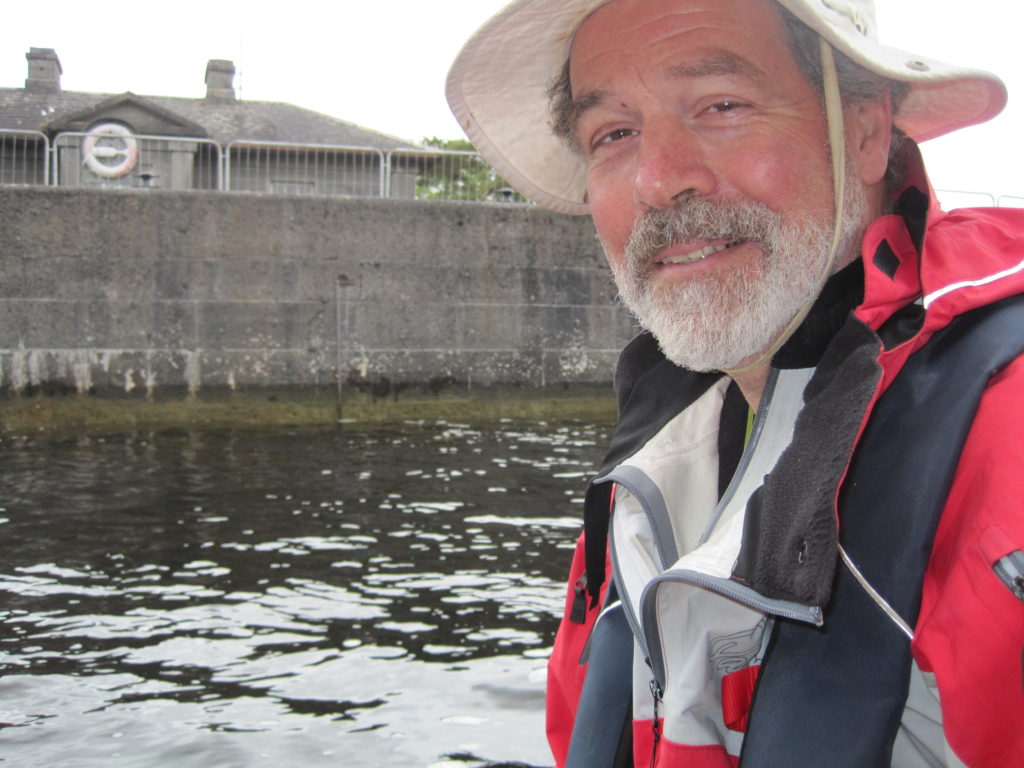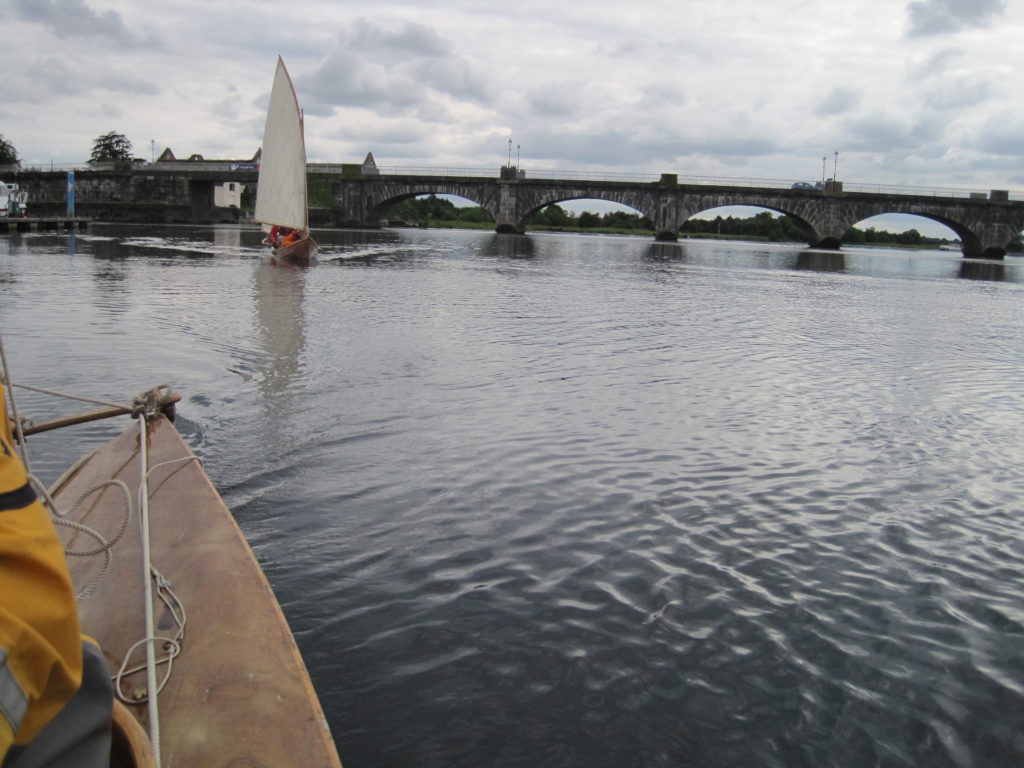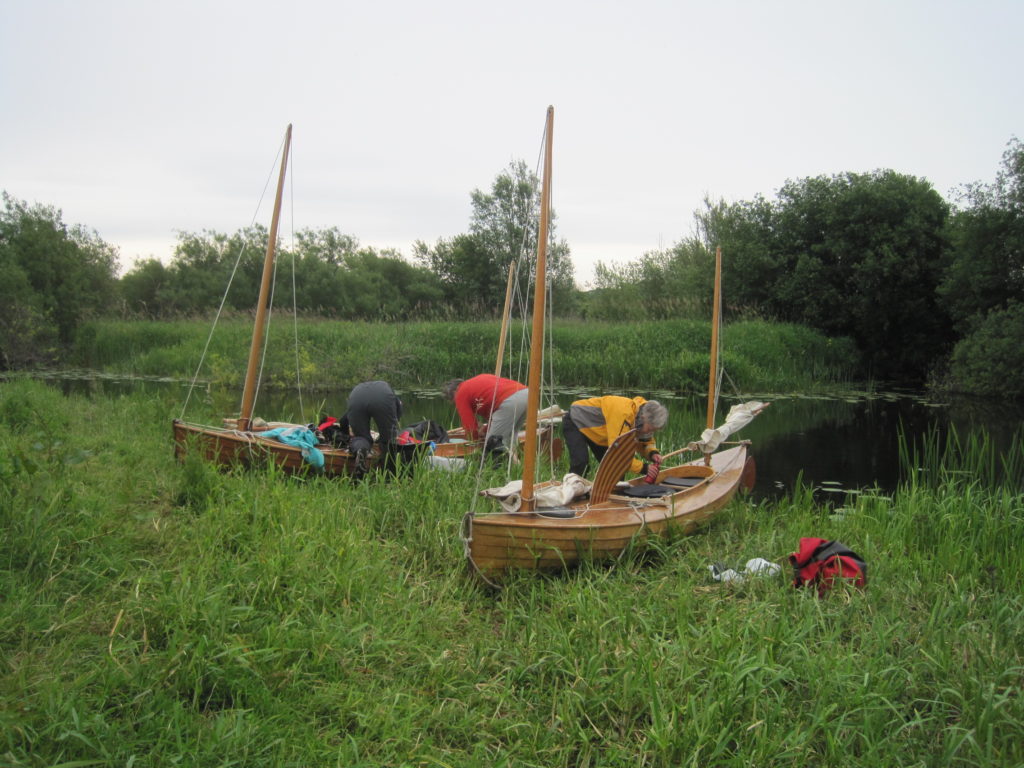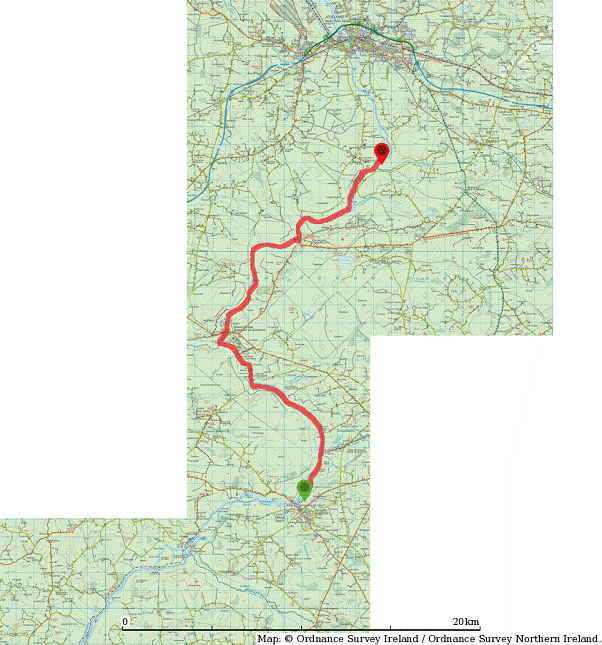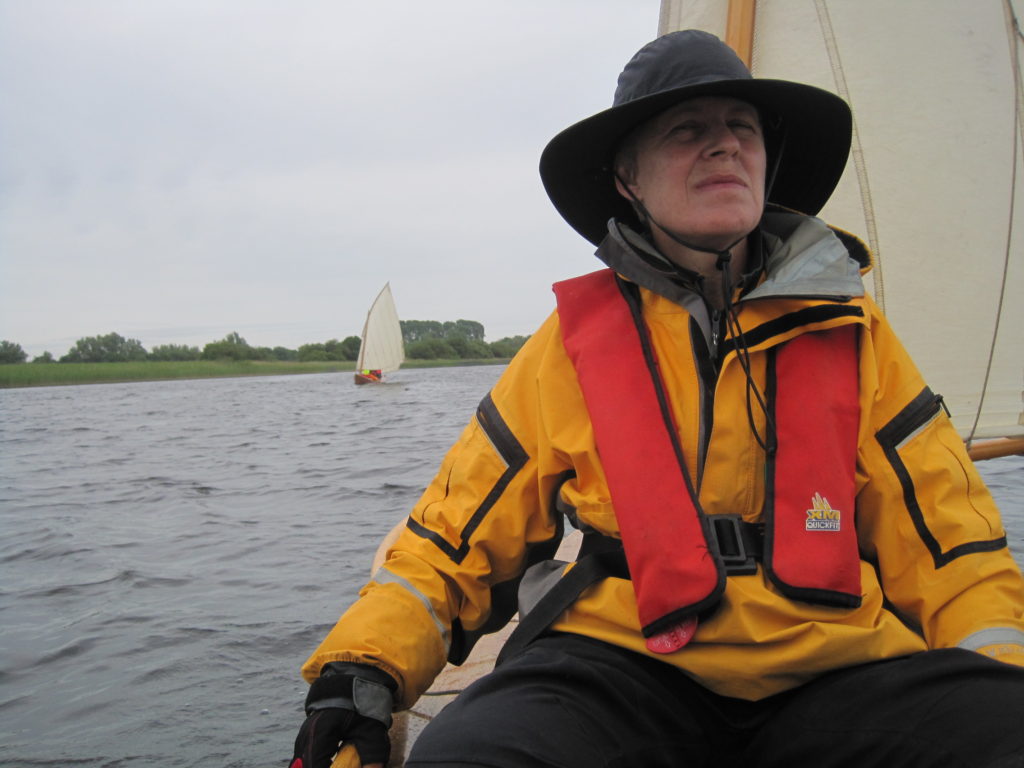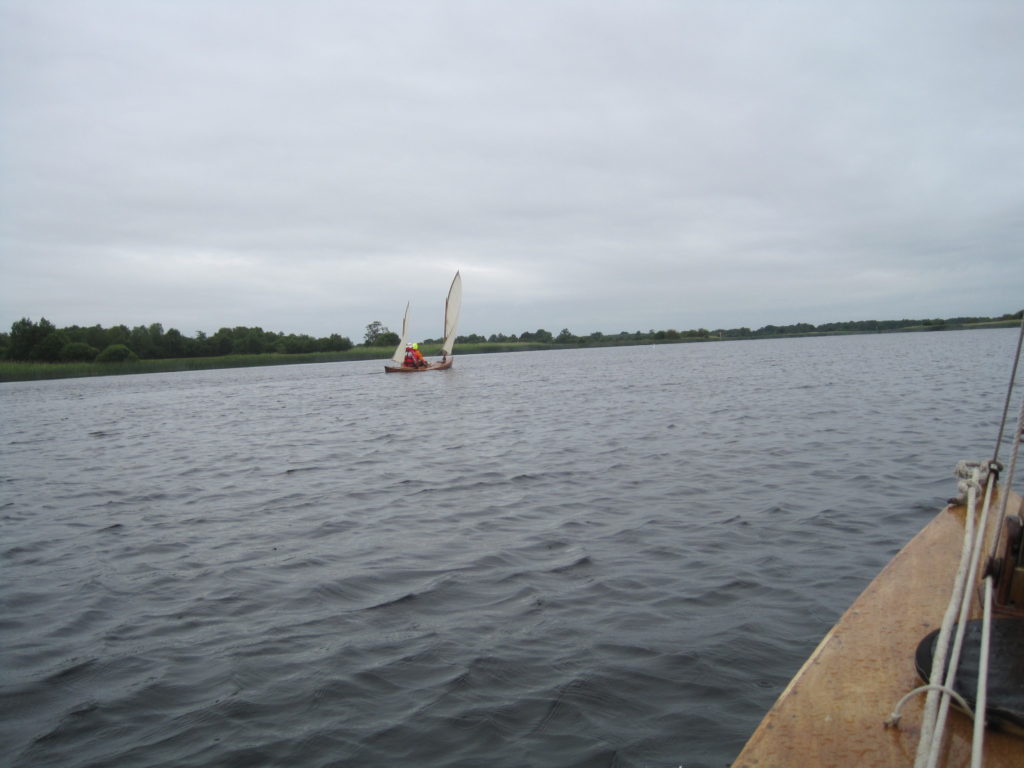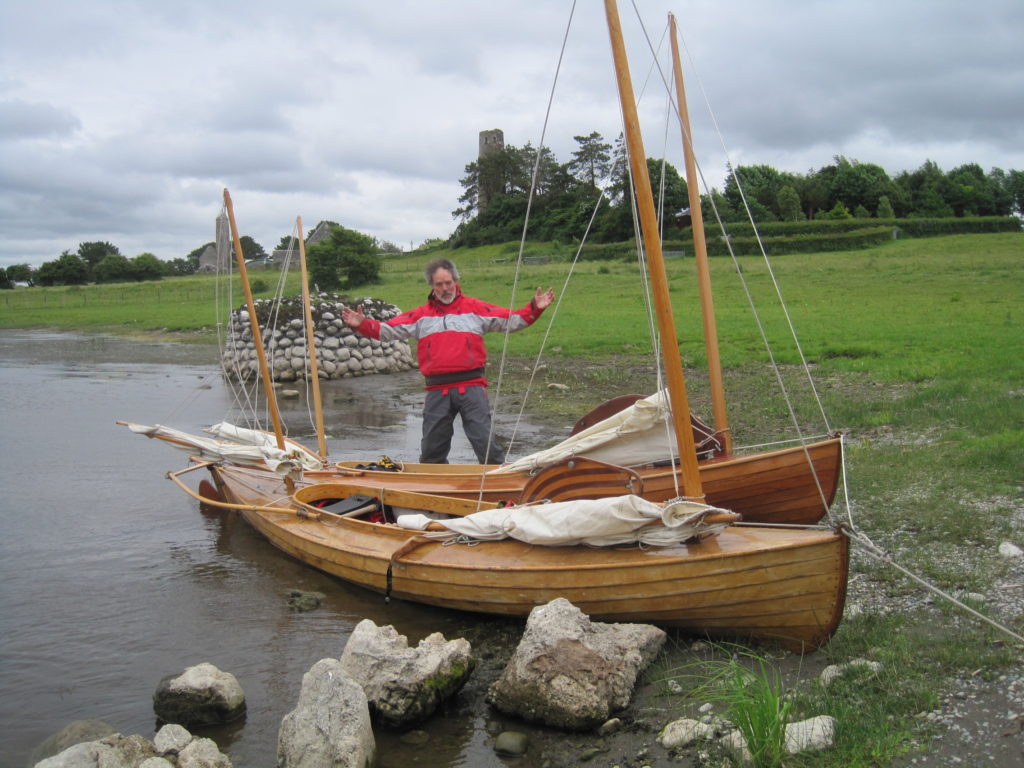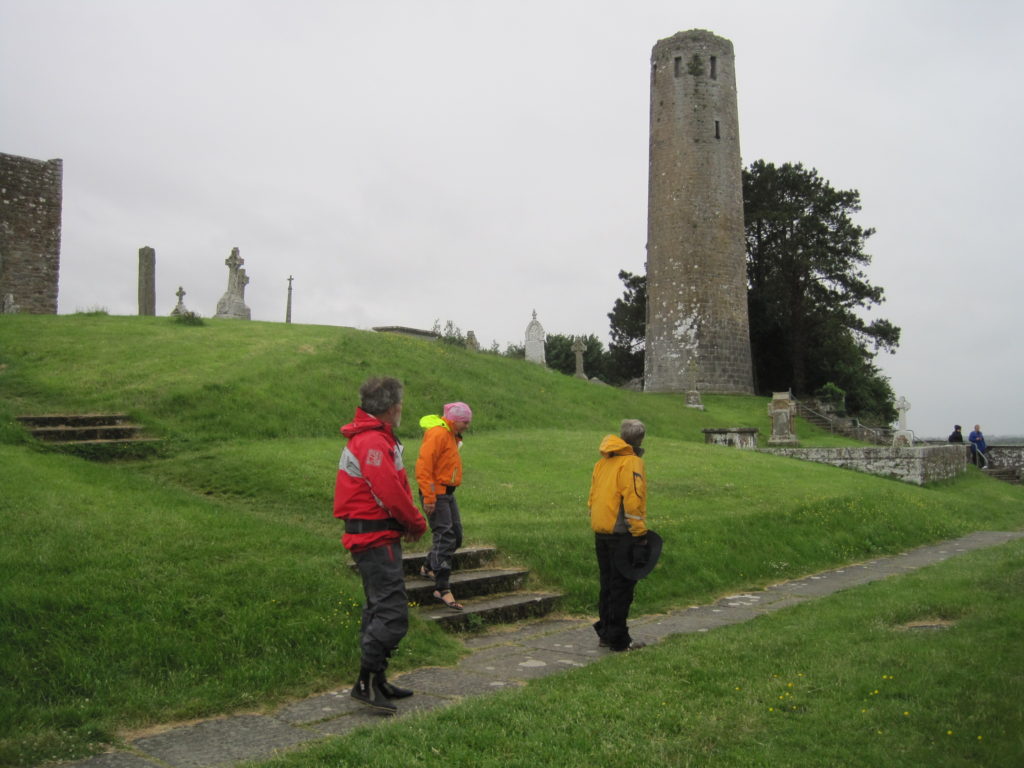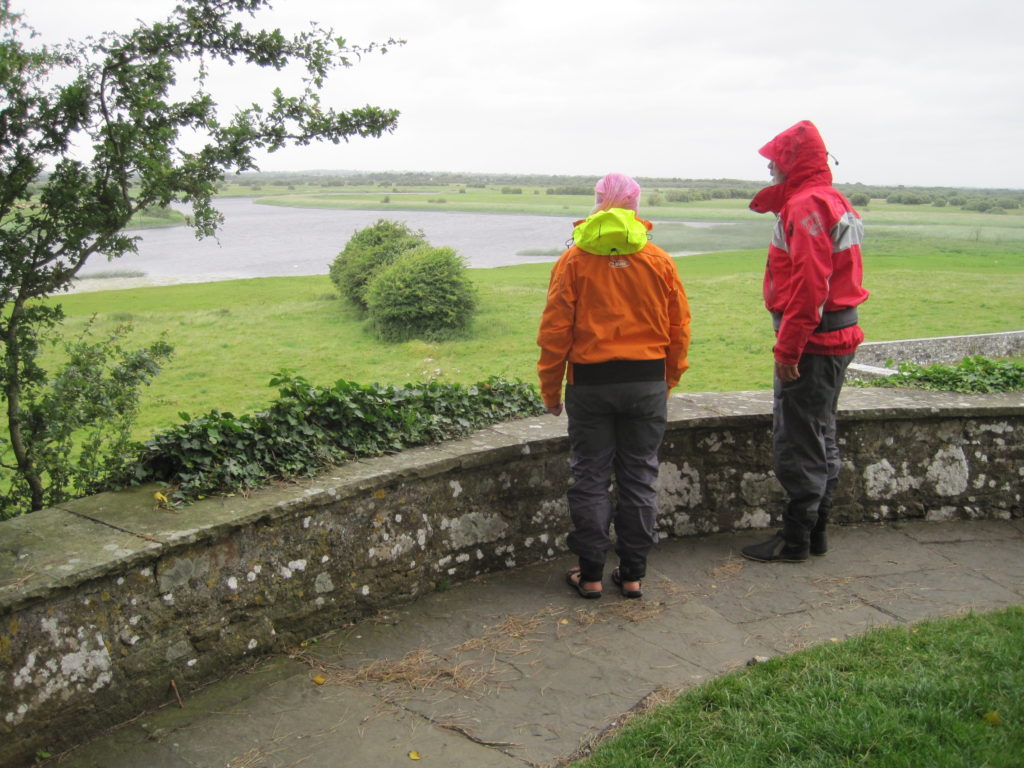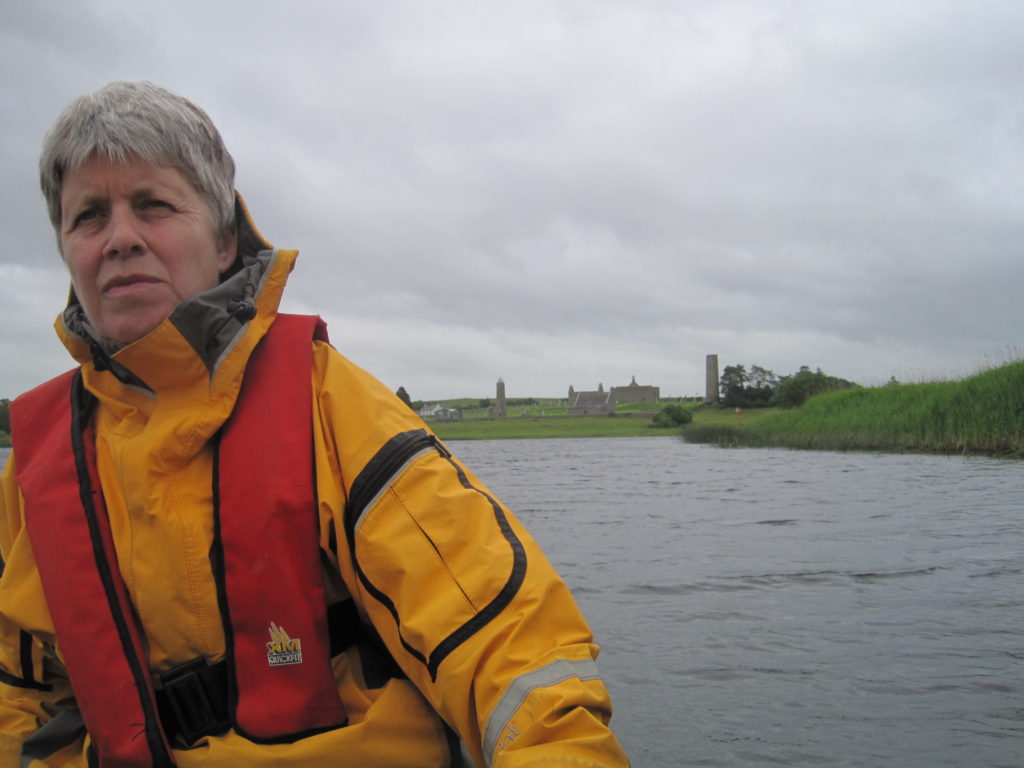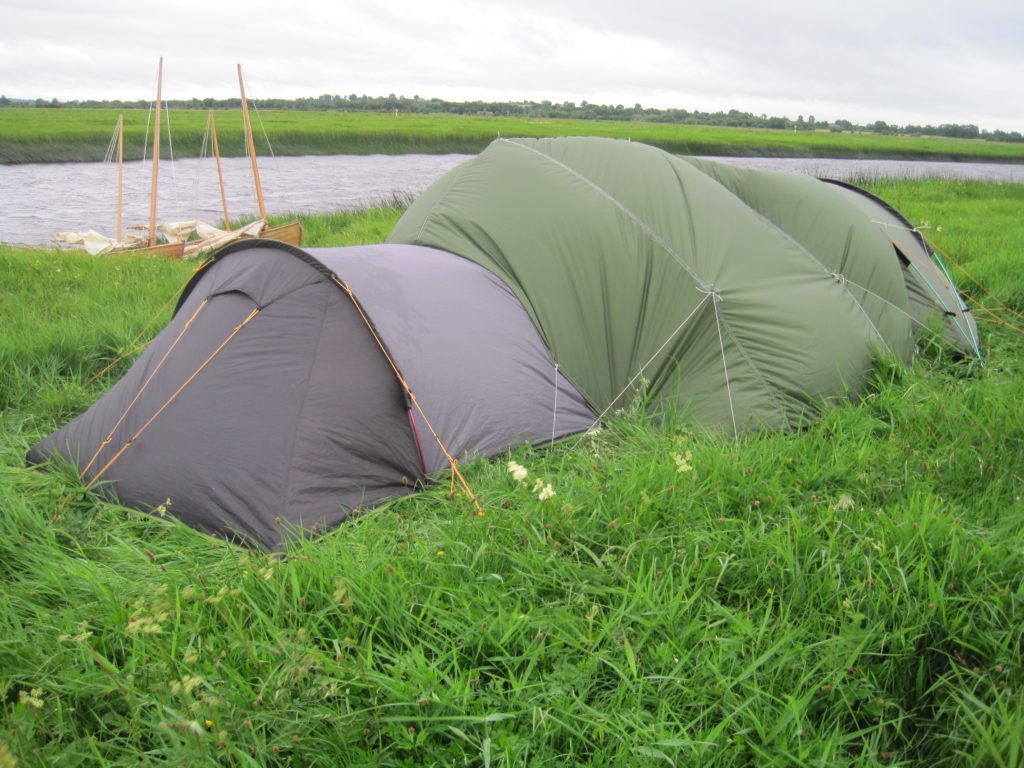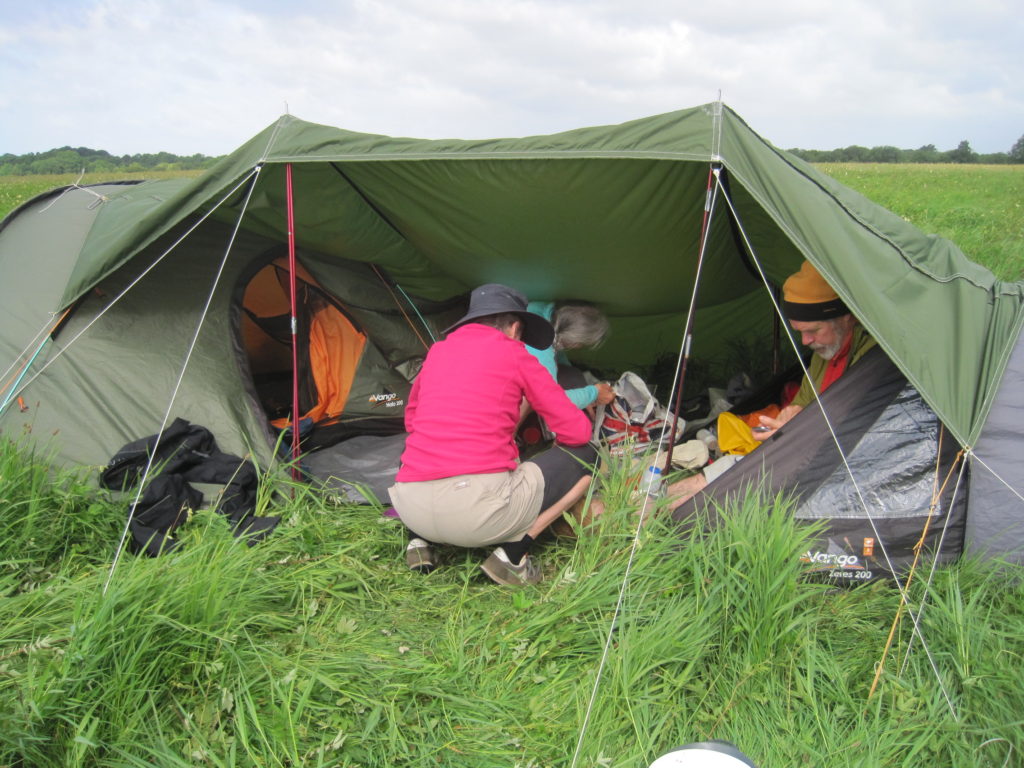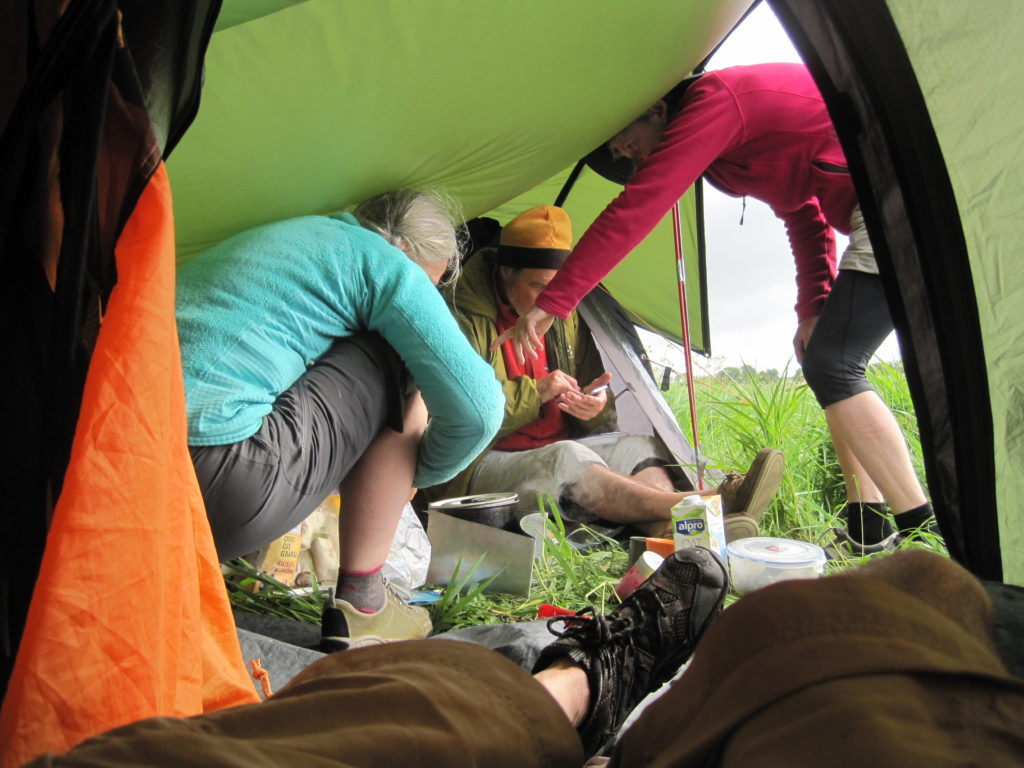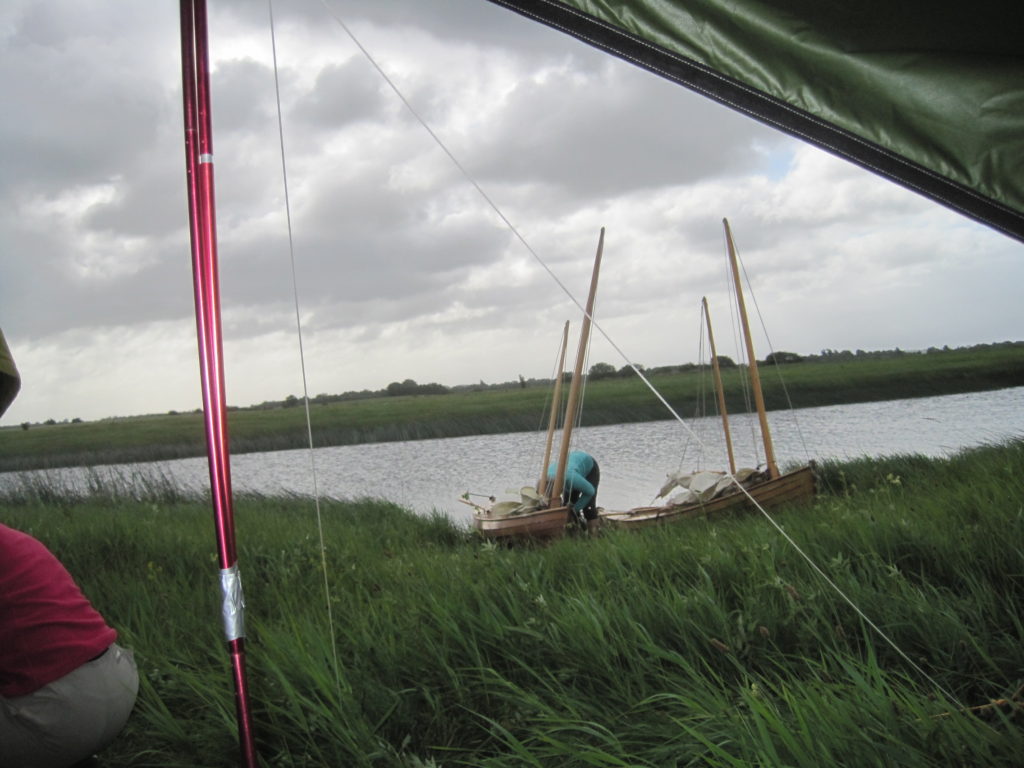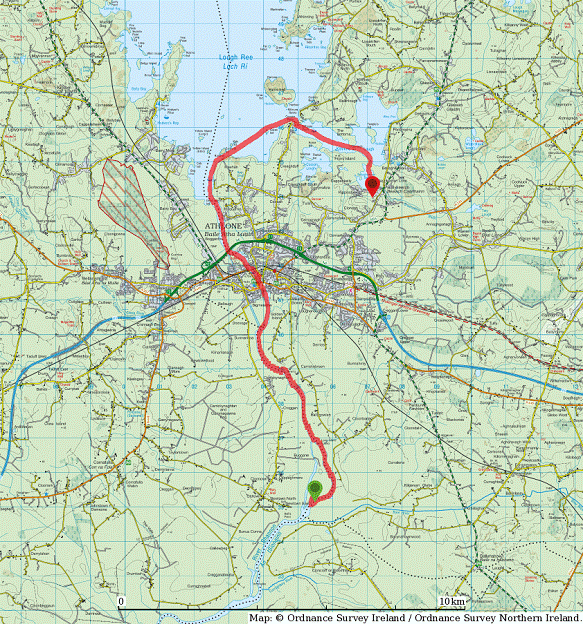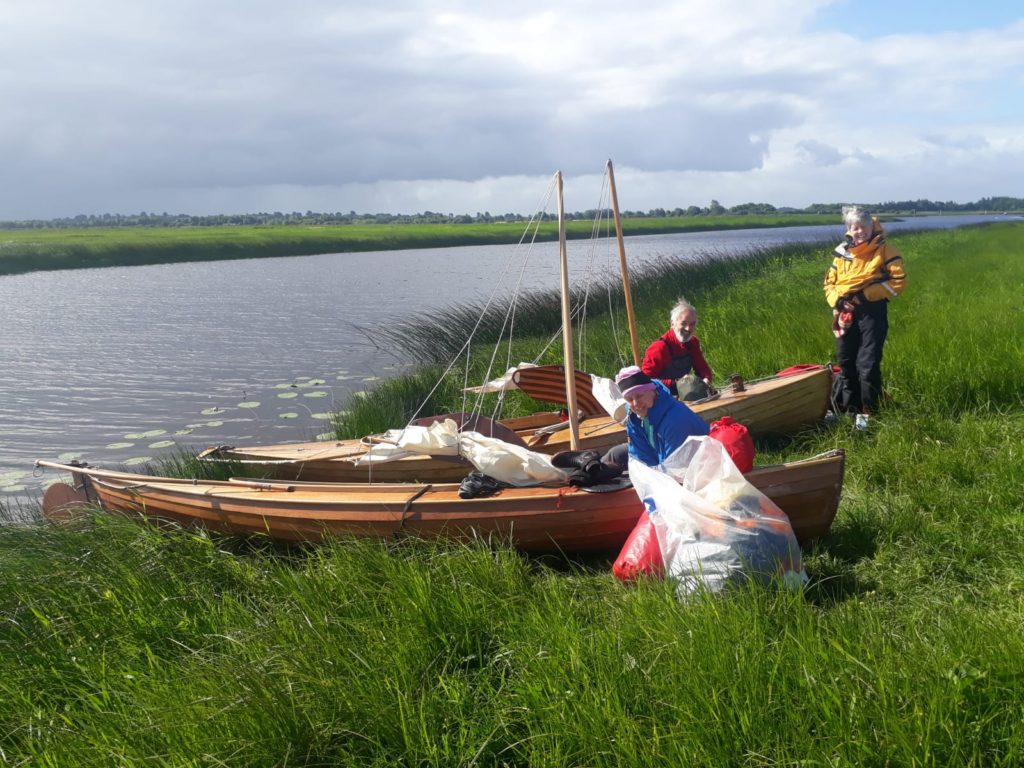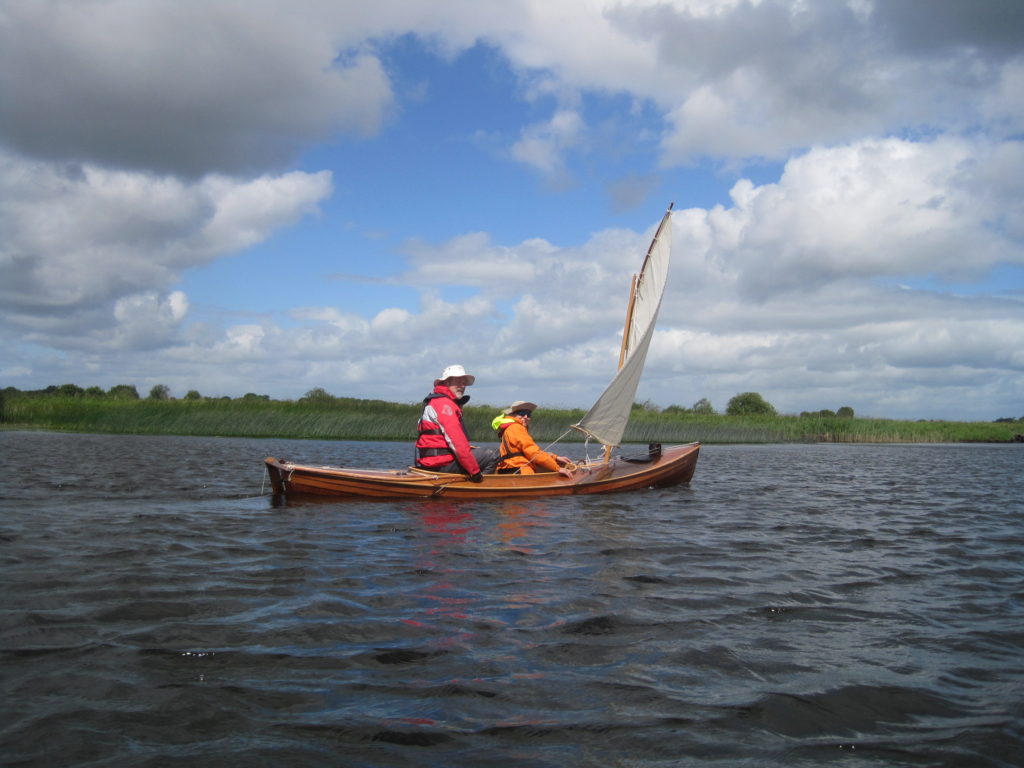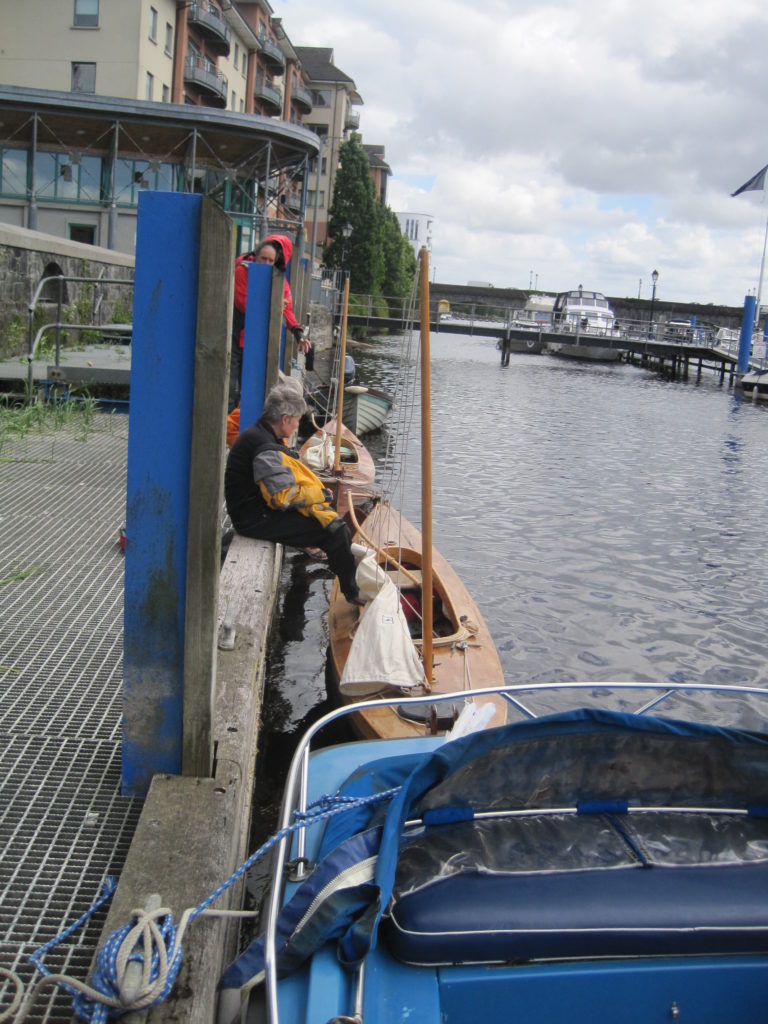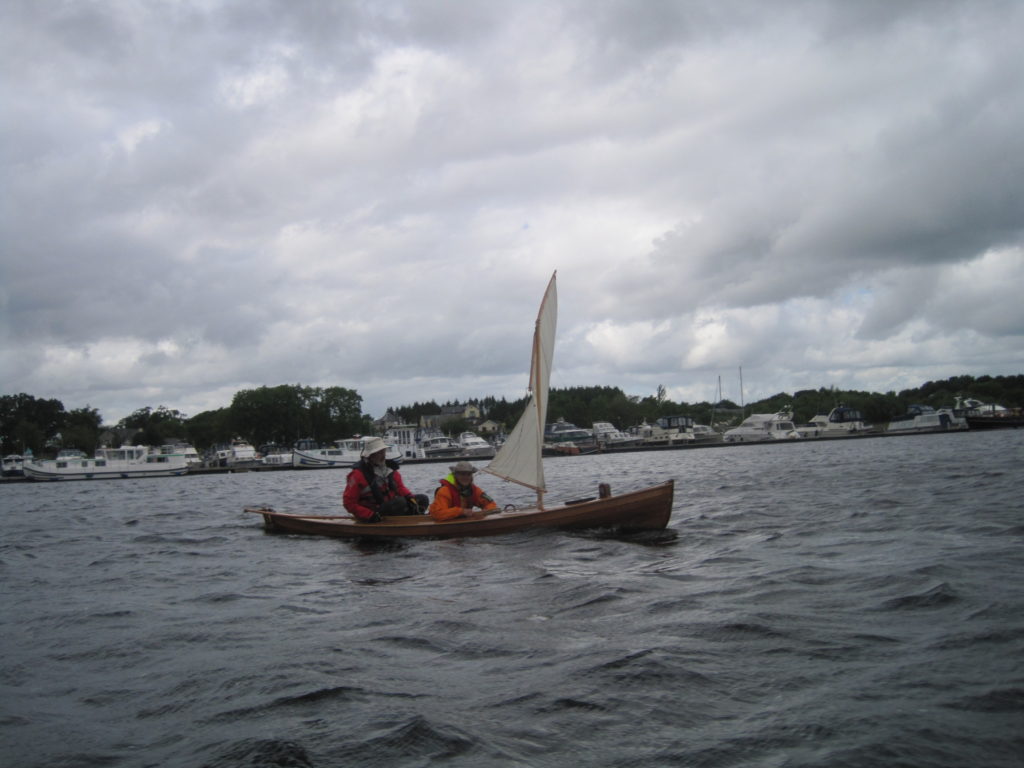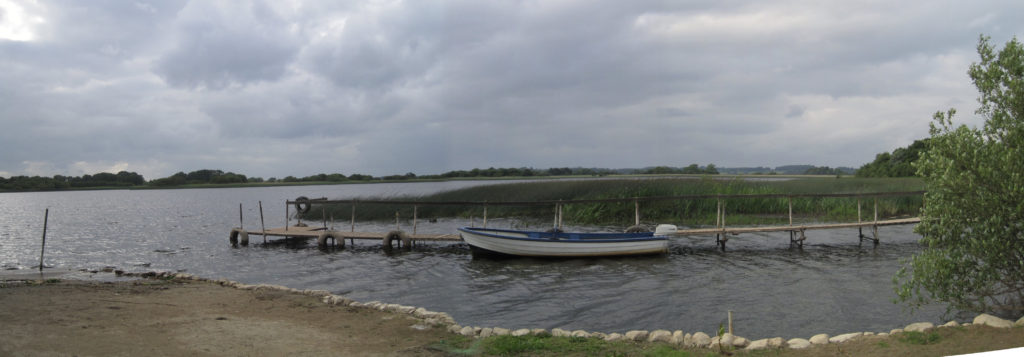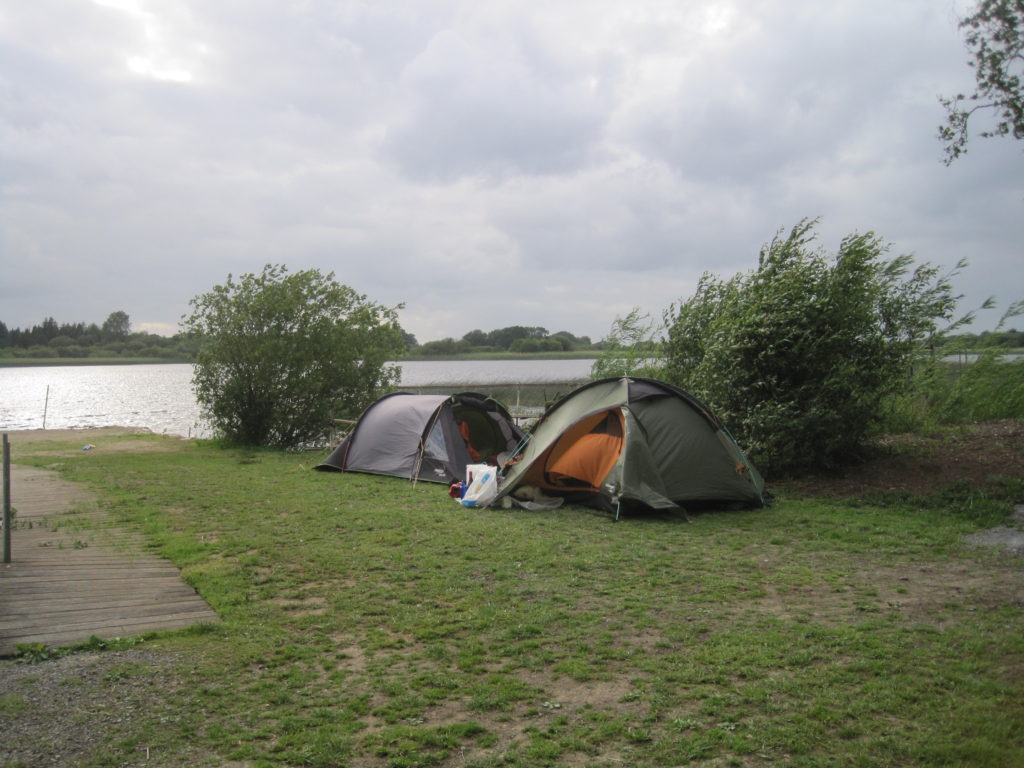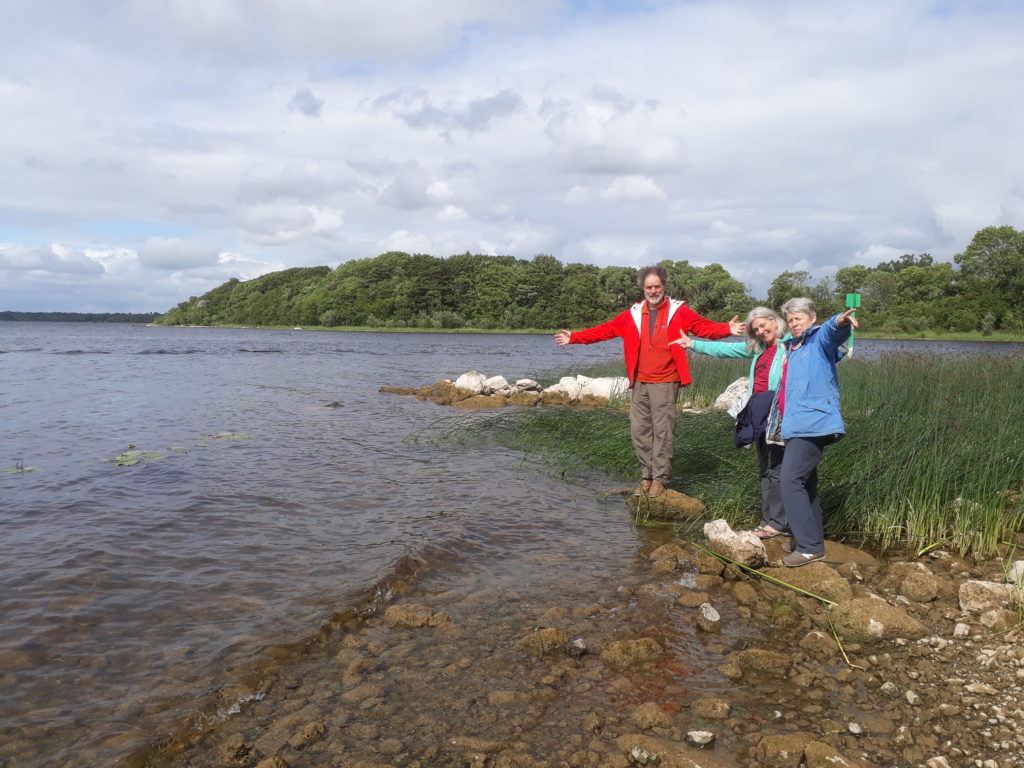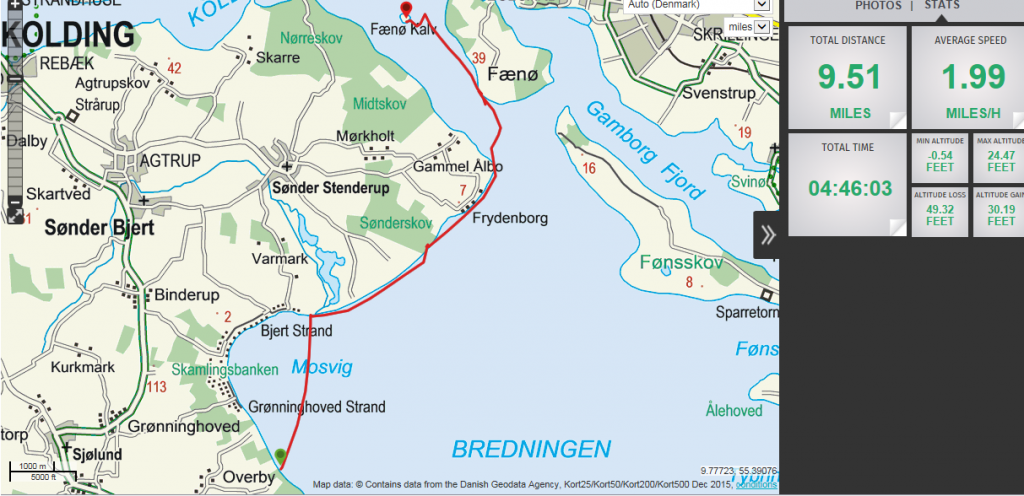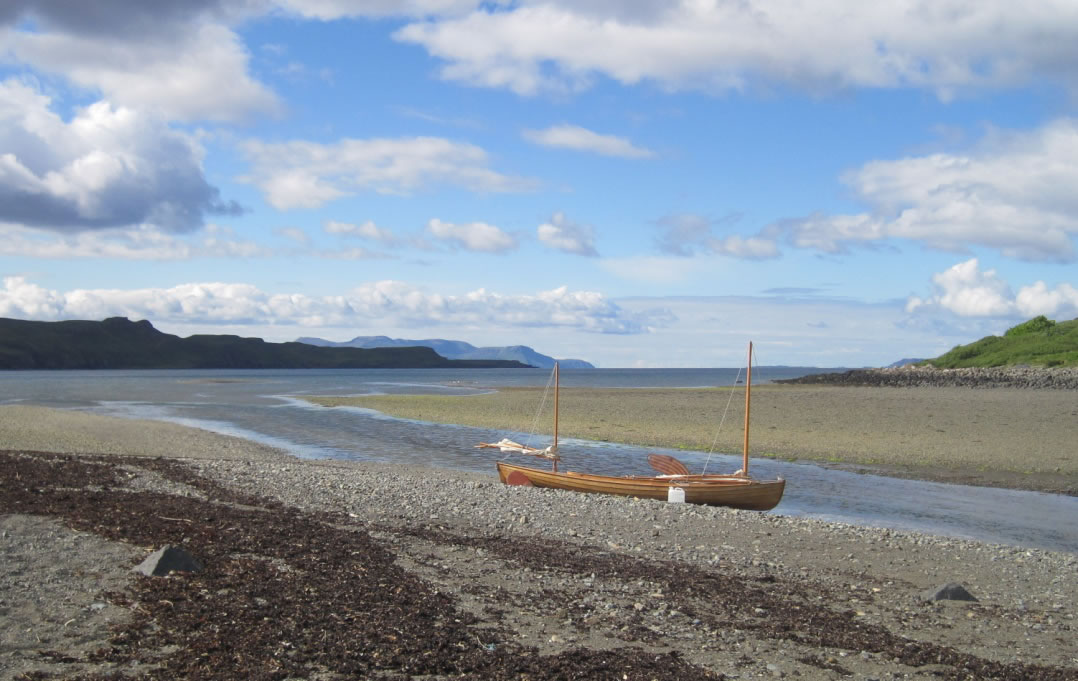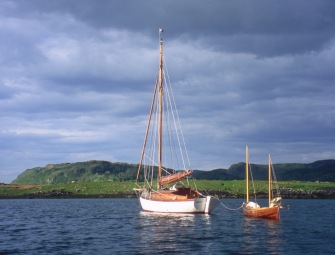We spent a night of luxury in a bed and breakfast near Athlone and went to sample the nightlife in the city , visiting the famous and historic Sean’s Bar.
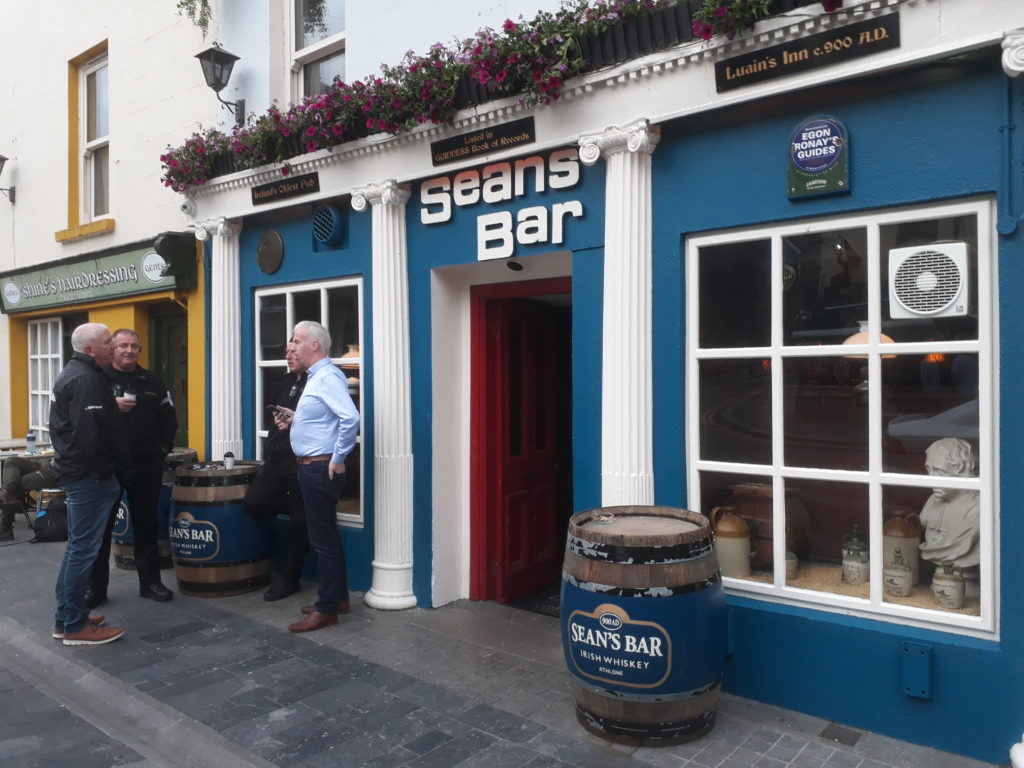
We returned to Ballina by bus, retrieved the van and said goodbye to William and Pat and then came back to pick up our new crew Jeremy and Rebecca at the station in Athlone.

Second week, Day 9 17/06/2018 6.3 miles
Despite getting up at 7am, the canoes were not actually on the water until much later. It was a somewhat miserable day, cold with drizzle and a SW force 3-4. The drive to Boyle only took about an hour and a quarter but we were initially prevented from actually reaching the marina with the van+canoes by a bar limiting the headroom on the access road to 1.8m. In any case, the marina proved to be another one designed like a U-Boat pen for large motor cruisers with high quay walls and no slip from which to launch.

A detailed look at the map showed another possibility so we drove to the point where the canal from the marina meets the Boyle river. This looked promising for a launch down the bank, but we found we had forgotten to fill the water containers whilst still near civilization!
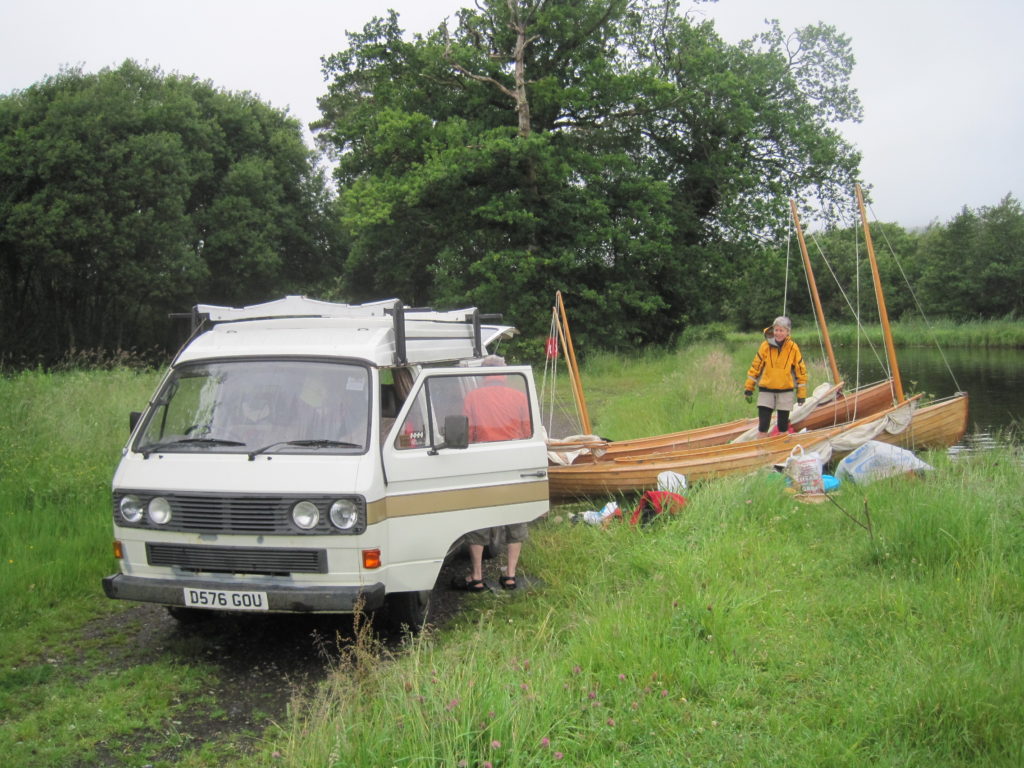
Finally we sailed out into the very scenic Lough Key at about 13.20 and went over to look at The Priory on its island.
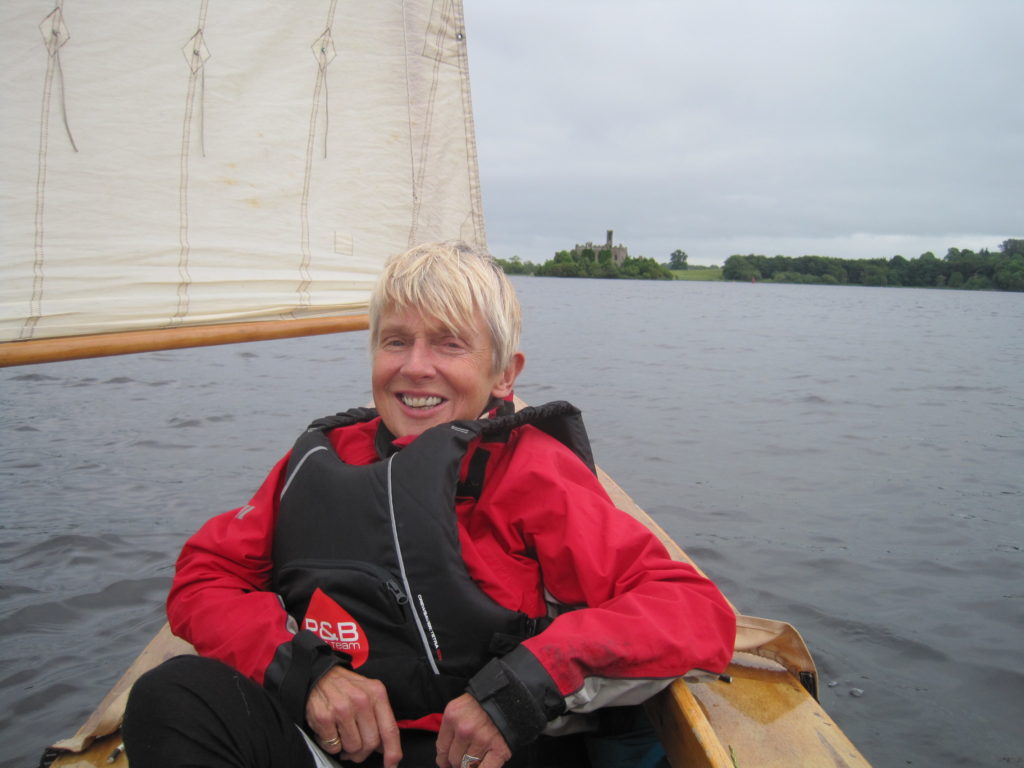
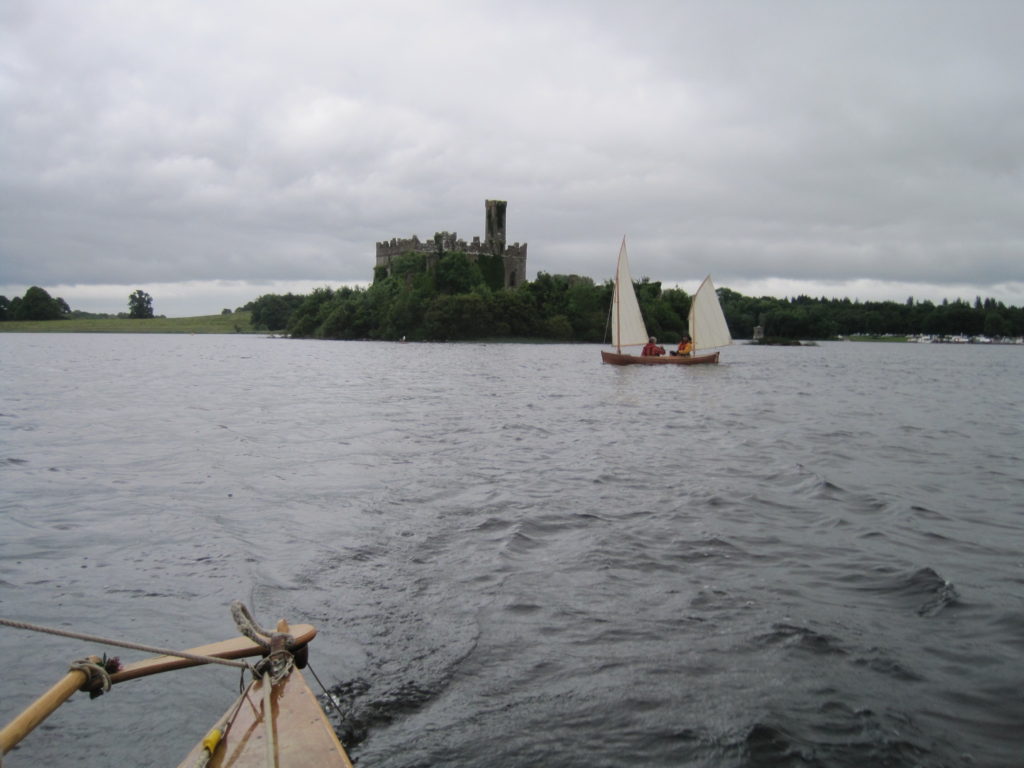
The Lough was surrounded by dense trees right down to the water and it was hard to spot the river exit. Cutting inside some small islands, I hit some rocks quite hard and the rudder of the old canoe seemed to have actually broken off and was trailing astern attached by its downhaul line. Initially I tried sailing with no rudder and then used a paddle to gain directional control but in the panic I lost my sense of direction and missed the river outlet and headed North into a blind bay. I took the sails down and retraced my course, Rebecca paddling well and finally got ashore in a shallow rocky bay on an island on the North shore of the river outlet. Fortunately the rudder proved to be intact and had only been knocked upwards off its pintels past the spring retaining catch.
We went out of the Lough and down the river, where the wind was mainly blanketed by trees, and round a corner to be surprised by a timber wharf with a picnic table on the left bank. We stopped for a brew-up as it was now about 15.30, and found that this was our first lock.
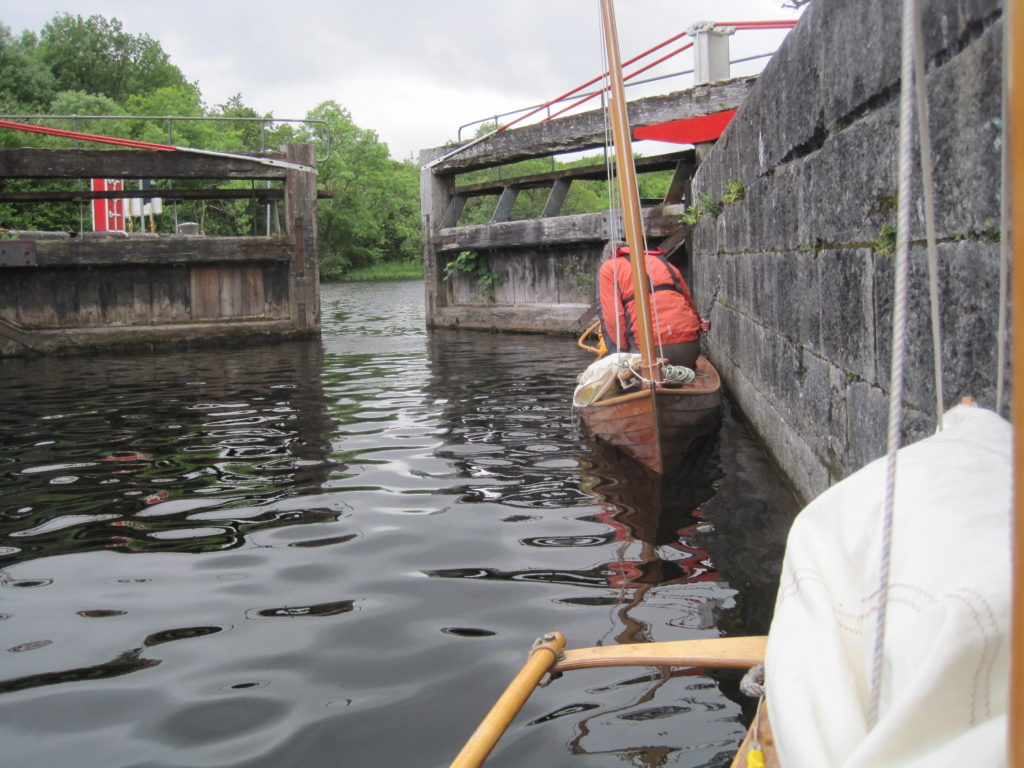
Below the lock it was a very nice river with trees, reeds, meadows and not much boat traffic. We soon passed a good looking camping spot and so stopped for the night a bit earlier than planned, at 17.00.
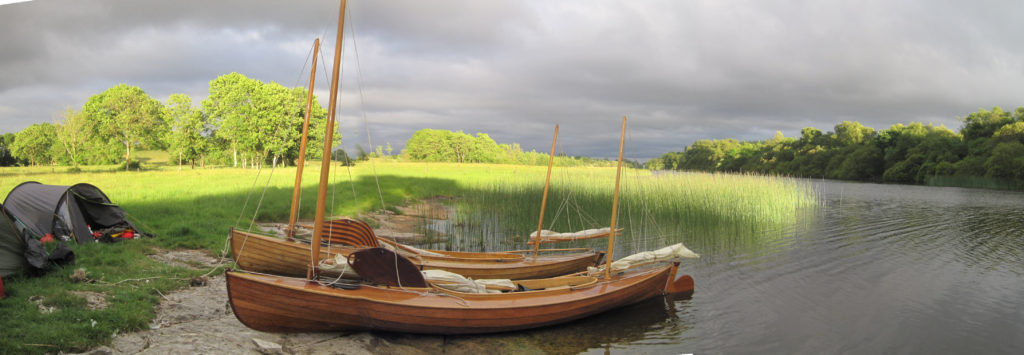
Day 10 18/06/2018 8.7 miles
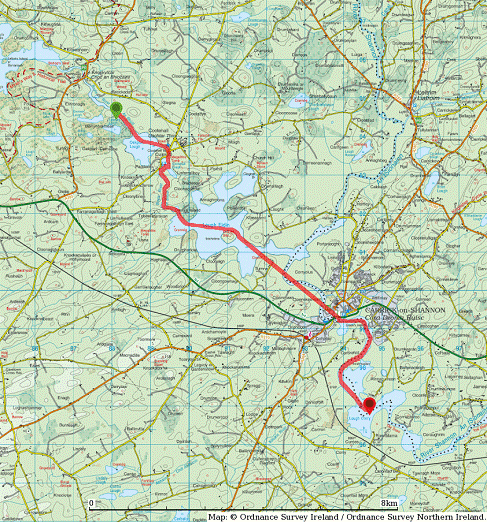
A fine and sunny start to the day with a nice swim in the river.
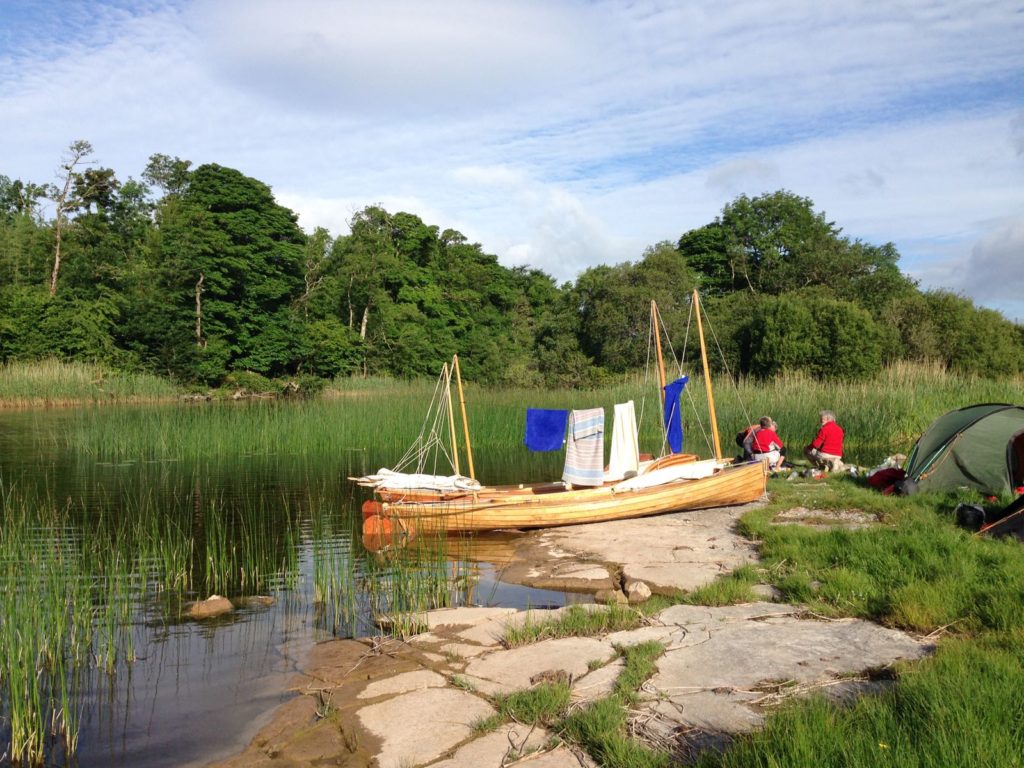
We sailed off with a fluky W/SW force 3-4. There are some nice small loughs on the river Boyle. We stopped for tea and a break on the South bank in a rather open field and got a bit cold. We went on out into the river Shannon proper and now there were some hired plastic motor cruisers to get in the way of our tacking. Rebecca and I very nearly capsized in the gusty wind ( I could see the centreboard sticking out horizontally just below the water as I lunged myself over the Port rail to balance the boat!) Rebecca had to bail a lot of water out which had come in over the Starboard cockpit coaming.
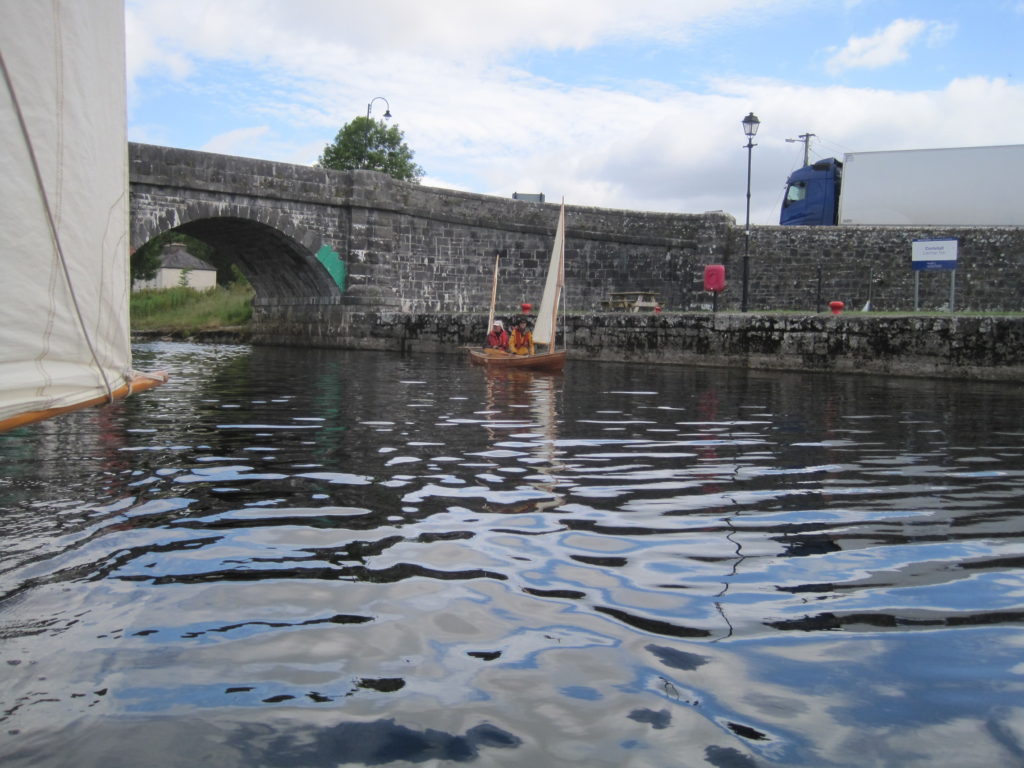
We struggled as far as Carrick-on-Shannon by 13.30. Initially we stopped on the West bank just below the bridge at the garden of a riverside pub, but unfortunately the pub was not due to open until 4pm and there was no access onto the road to cross the bridge until then. We moved to the opposite side of the river and moored up to a pontoon.
We were all looking rather cold, so we had a pint of Guinness in a nice but very quiet pub with a friendly landlord who, despite not serving lunch, went out and got us chips from the local takeaway for free!
We walked a long way across the river and out towards the suburbs to a Supervalue supermarket, at his direction, in order to buy some fish for supper. We got very cold again so went into a cafe there for hot chocolate, to warm up.
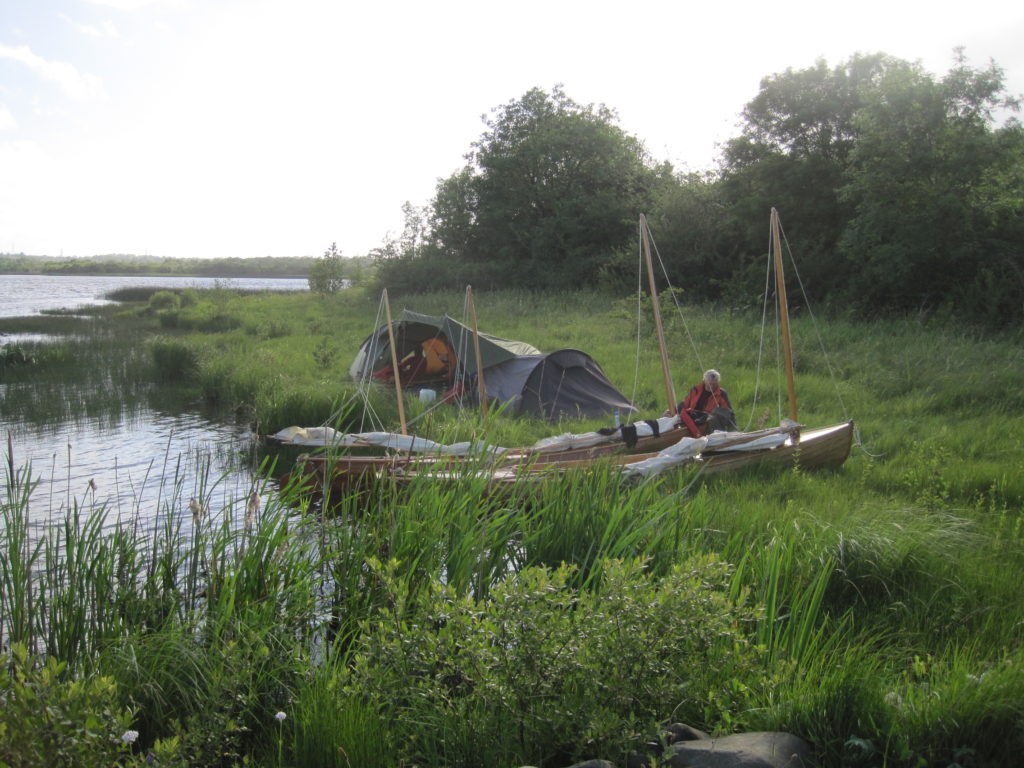
The wind was now more N Westerly. We sailed on down river for a bit and camped on the East bank just round a bend at 5.30 in the shelter of some trees. I put up the cooking shelter in case of rain and Jeremy found an abandoned plastic chair to increase his level of comfort in the camp.
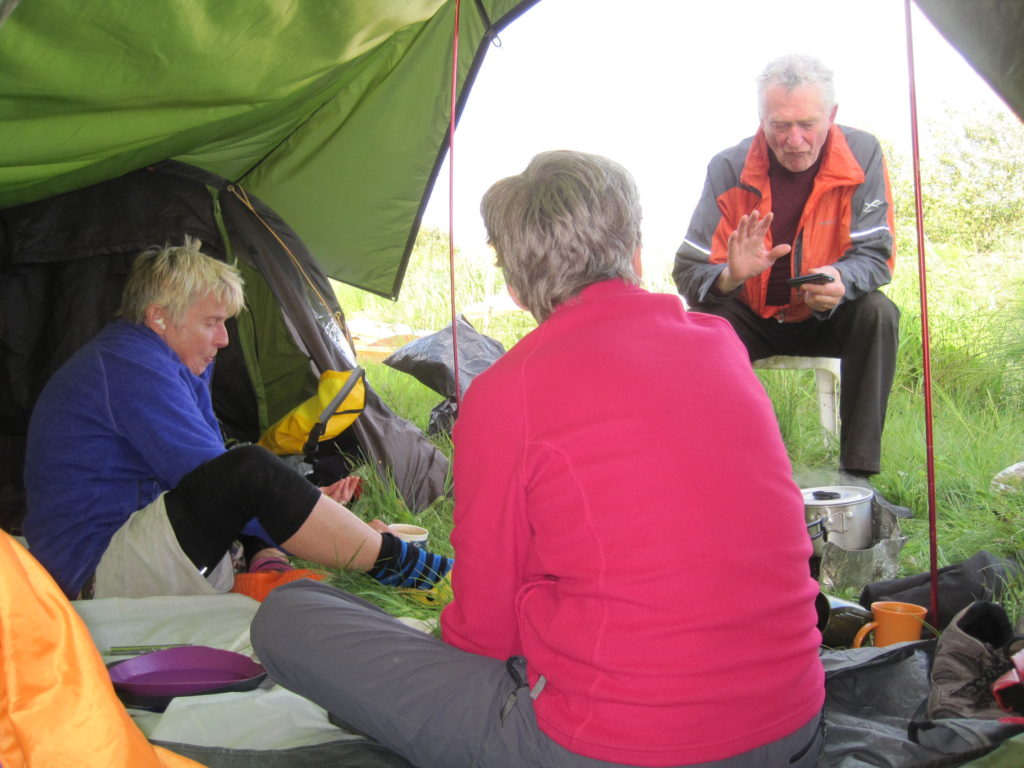
Day 11 19/06/2018 14.7 miles
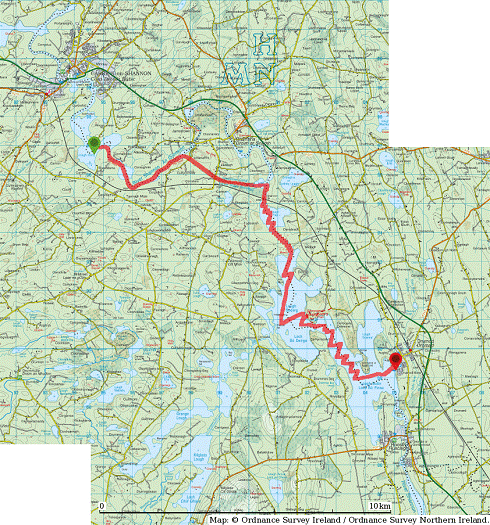
It was a grey day with a light wind from the South which increased a bit through the day. We packed up camp and paddled the first reach to the SE.
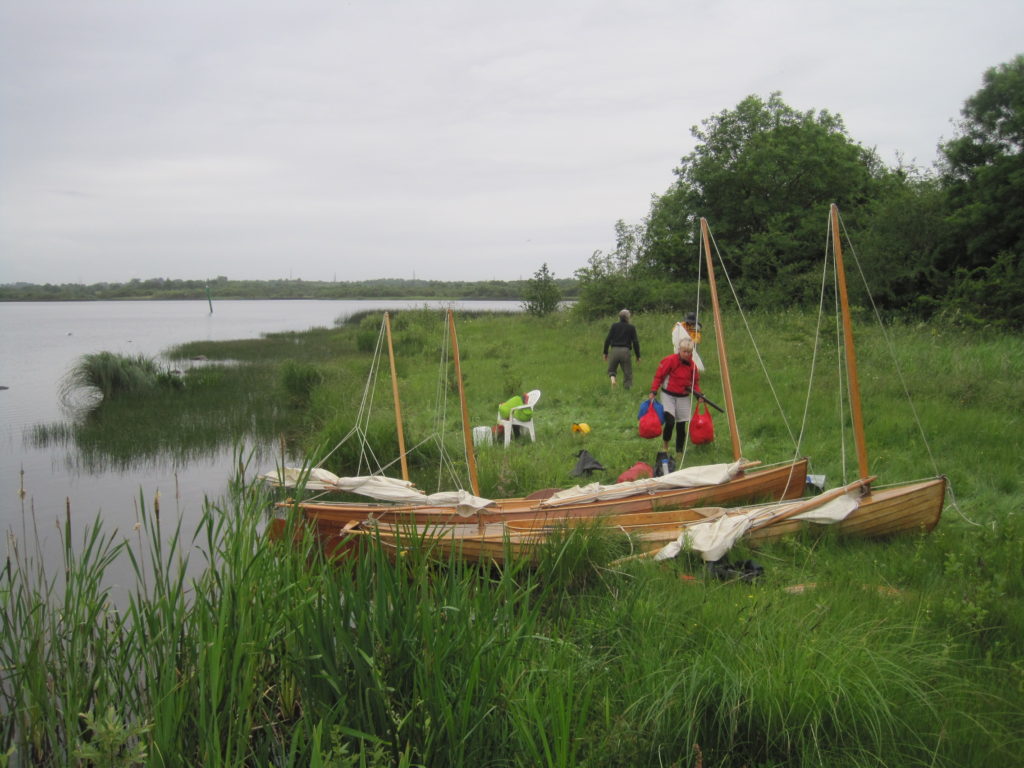
We managed to sail the next reach heading NE but without much wind.
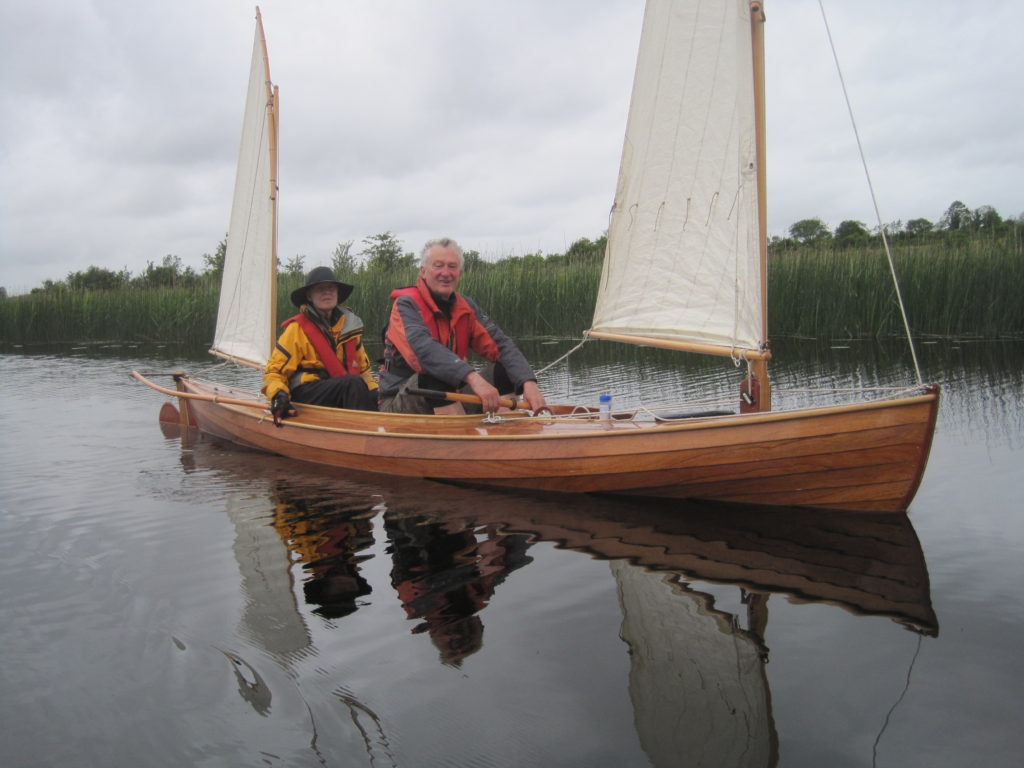
The river goes over a weir at Jamestown, so it was necessary to paddle through a 1.5mile long cut to reach a lock which lets you back out onto the river well below the weir. Going ashore to speak to the lock keeper, I found a pair of glasses on the ground as I rushed across the upper lock gate, quickly, before it was reopened. The glasses were hers and she was very grateful.
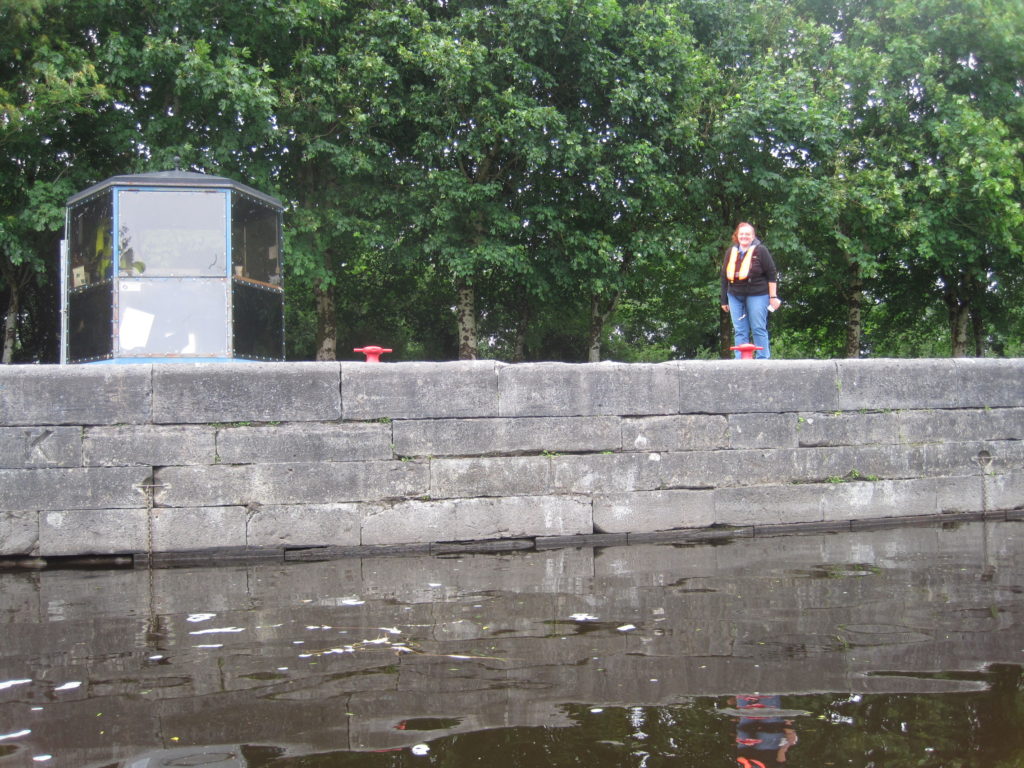
Perhaps as a consequence she took an interest in the canoes and was very accommodating regarding our transit of the lock, including asking me if I would like her to open 1 sluice or 2 and not bothering us with requests for long ropes for the bow and stern etc.
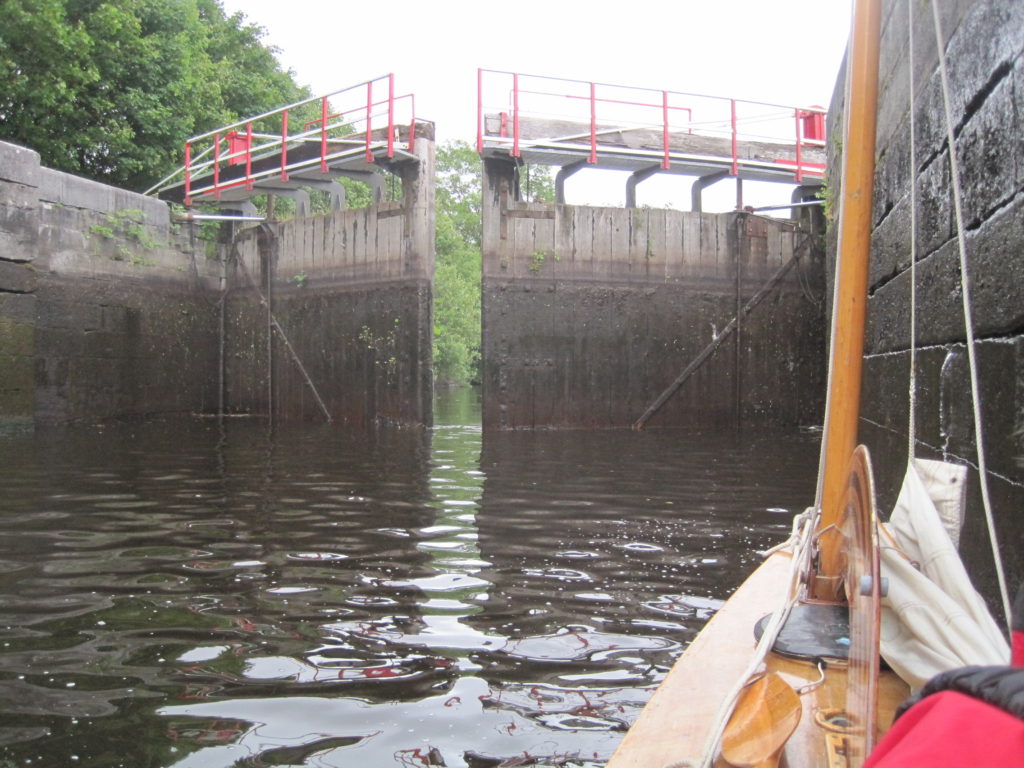
We stopped to boil up a cup of tea on the pontoon below the lock.
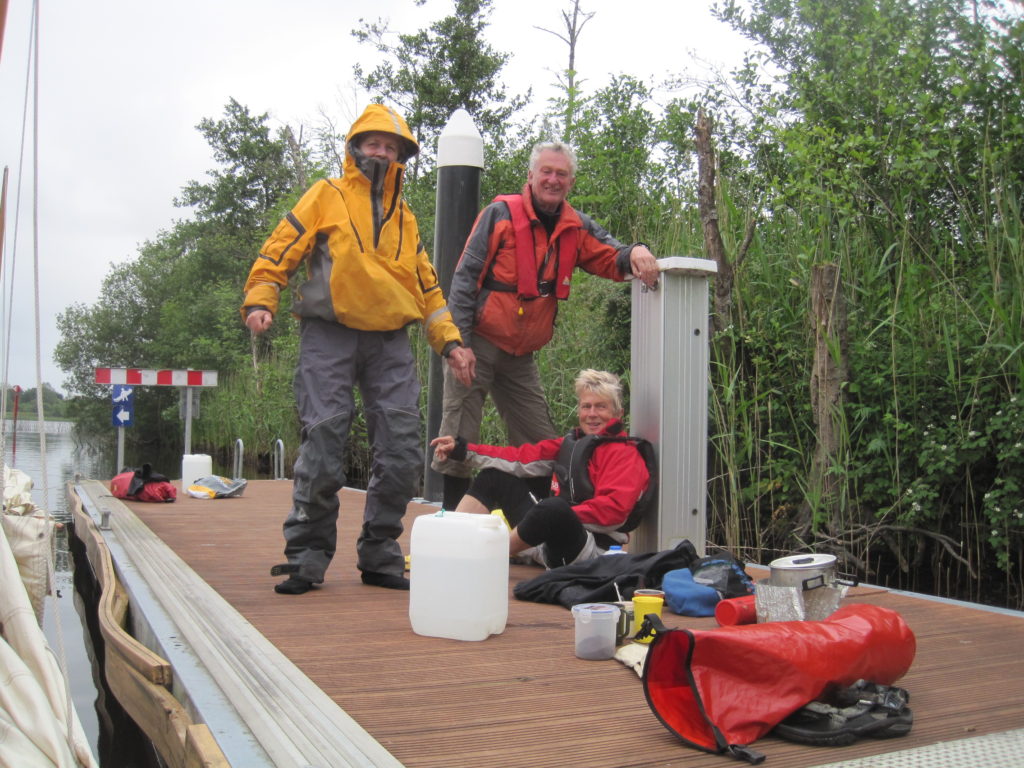
From here we were now tacking against a force 3 wind from the SSE. It was a very long tacking session in a drizzle of rain. We reached more open water in Lough Boderg and were able to do longer tacks. In the poor visibility, I could not see Barbara and Jeremy in the other canoe behind us and worried that everyone must be getting very cold and miserable. It was well after lunch time so I stopped at a less than ideal, rock infested bit of the wooded Eastern shore. Jeremy was indeed very cold. We had a hot cup-a-soup and some chocolate and felt a bit better.
The channel cuts East through a narrow gap here and then we did a lot more tacking down into Lough Bofin. At this point it was possible to turn East and run across the rocky shallow directly towards Drumod. We were buoyed up by the promise of hot showers at the marina. The harbour had the usual U-boat pen architecture, but we managed to beach on a bit of rocky foreshore near the entrance. Behind this, there was a stretch of well mown grass with some picnic benches and a line of trees.
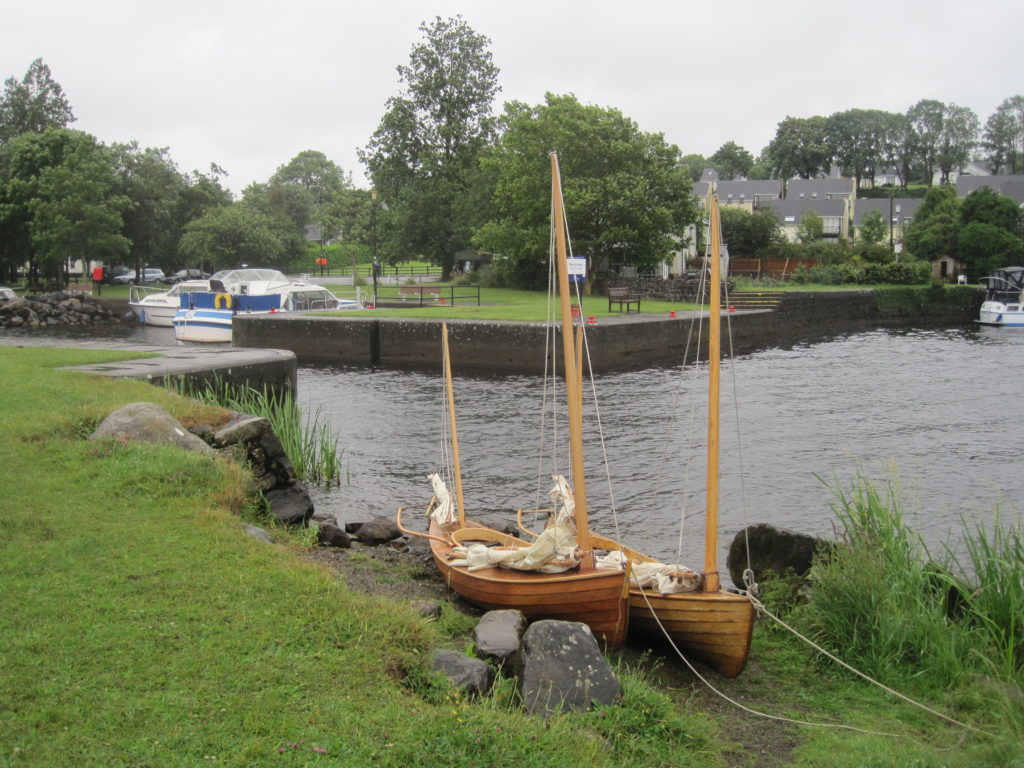

It became obvious that if we had the hot showers, we were not going to want to go any further that day! We erected the tents and the cooking shelter, making it look a bit like a Gypsy encampment.
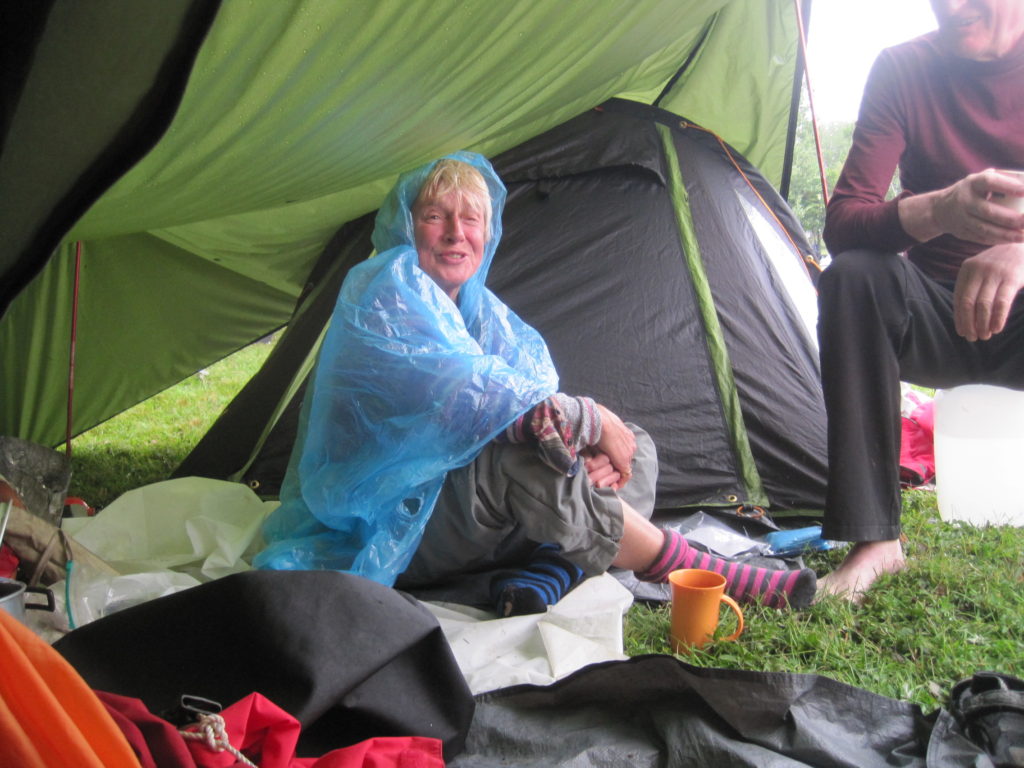
A guy in a reflective jacket wandered over. He looked as if he was going to say that we couldn’t camp in this well manicured sub-urban location. What he actually said was ” you must be wet through. Would you like me to take your clothes and dry them in my dryer at home?”
The Irish can be so friendly. After the hot showers, we went out for a wonderfully carnivorous meal at Cox’s Steak Restaurant, a short walk from the harbour.
Day 12 20/06/2018 18.6 miles
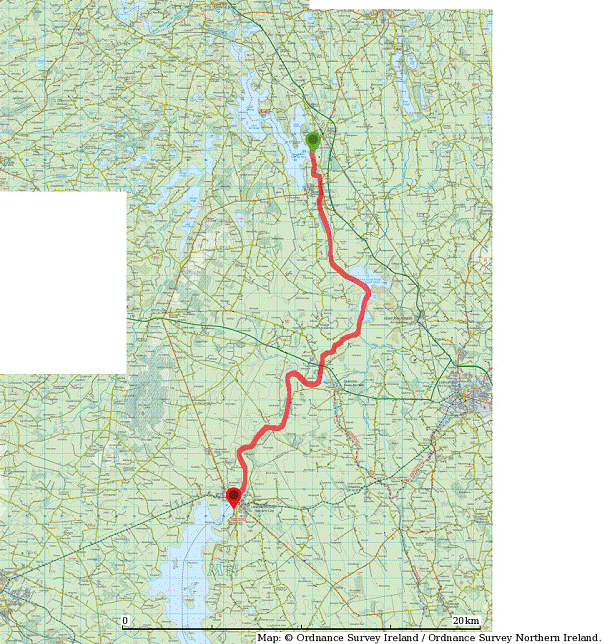
It was a better day with a NW force 3 and some breaks in the cloud. We left at 11.15am after a short walk to find a cooked breakfast at a strange hotel and after Adrian ( the man in the reflective jacket) had brought back our dried clothes. We were very appreciative and when she got back home Rebecca sent him a hand-made thank you card.
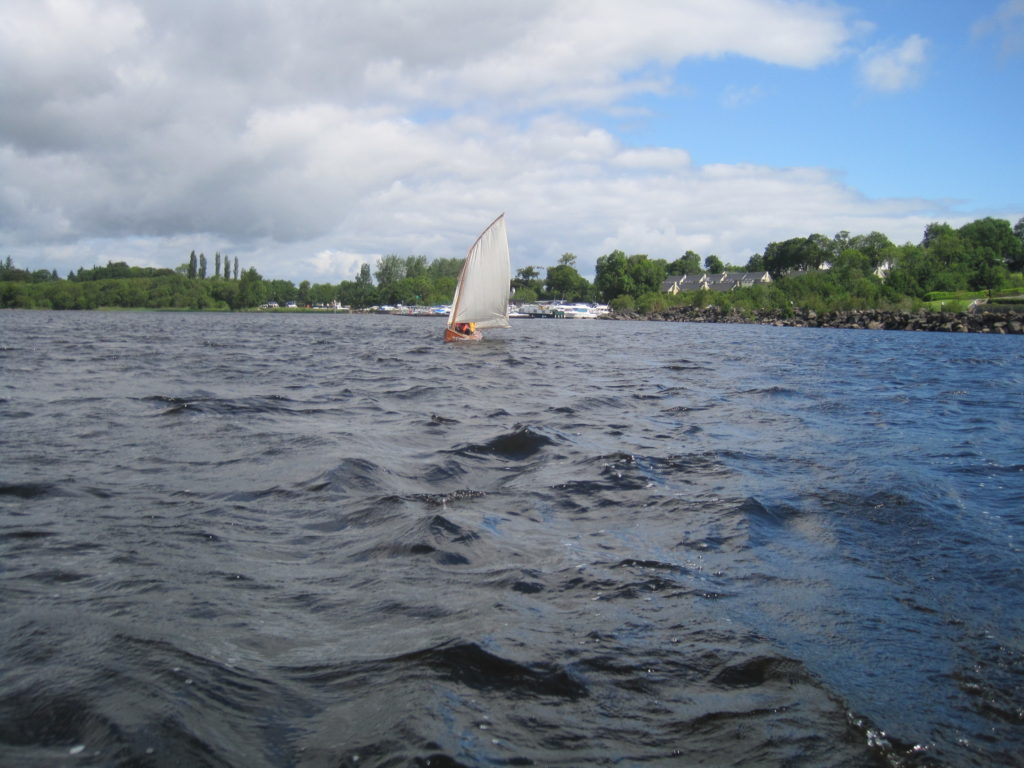
Initially it was a morning of fine broad reaches. We went through the lock at Roosky then had a dead run followed by a broad reach for 2 miles down a long open stretch at up to 6 knots with Rebecca enjoying hanging out and going Wheeee……!!
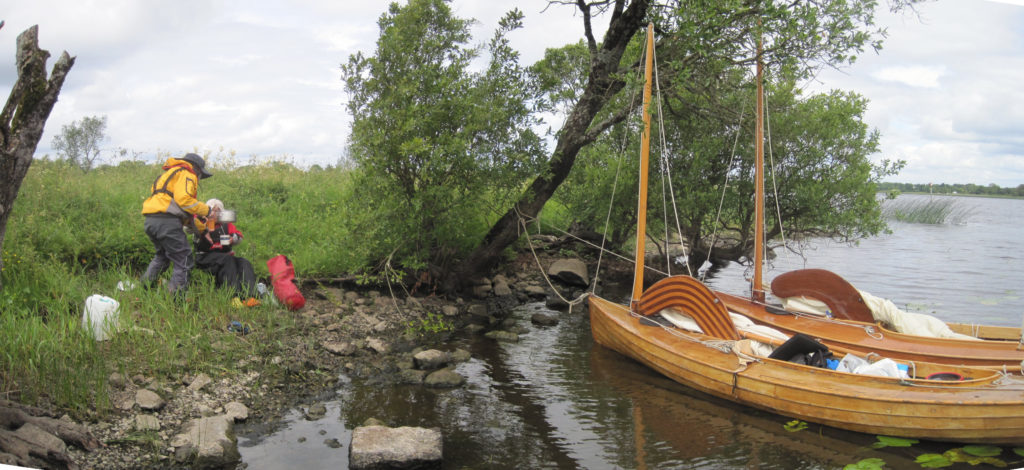

We stopped for a break on a narrow point at the bottom end of this stretch.
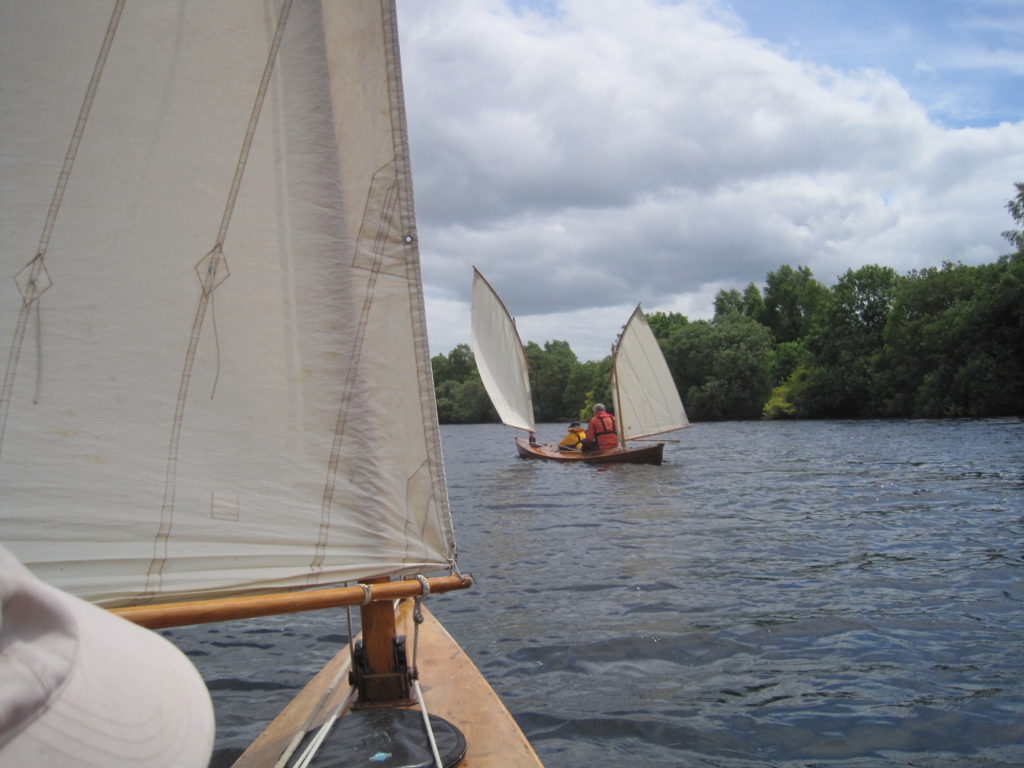
We went on through Lough Forbes and into a section with more trees and a more Westerly course which made for frustrating sailing. I tried to reach the lock at Termonbarry ( pub+ shop?) for lunch but Barbara had got cold and tires and was a bit fed up and so stopped 1/2 mile short of it on the West bank in a spot with a lot of large slippery rocks under water which made it a nightmare getting people and gear in and out of the boats.
After the lock we rounded a long right hand bend and came into a narrow reach dead to windward. This required us to do some hard short tacking against the fresh and gusty wind funnelling down it. Rebecca enjoyed the thrill until we ran on to a rock. Jeremy and Barbara wisely decided to paddle instead.
We went on down more reaches of the river looking for a likely place to camp in order to stop before we reached Lanesborough and the entrance to Lough Ree. Unfortunately, none proved suitable, as the river banks were mostly thick with reeds, so in the end we wound up at the canoe slip in Lanesborough at about 6.30pm. We made the best of it and camped on a small area of grass next to the cruiser’s U-boat pens again.
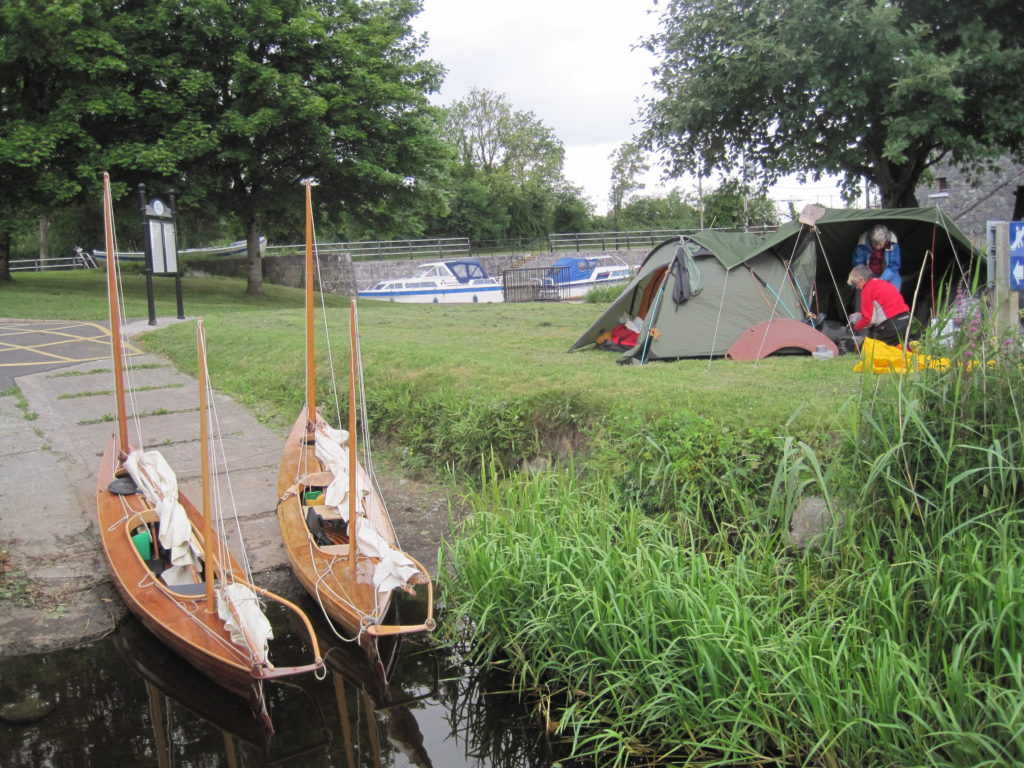
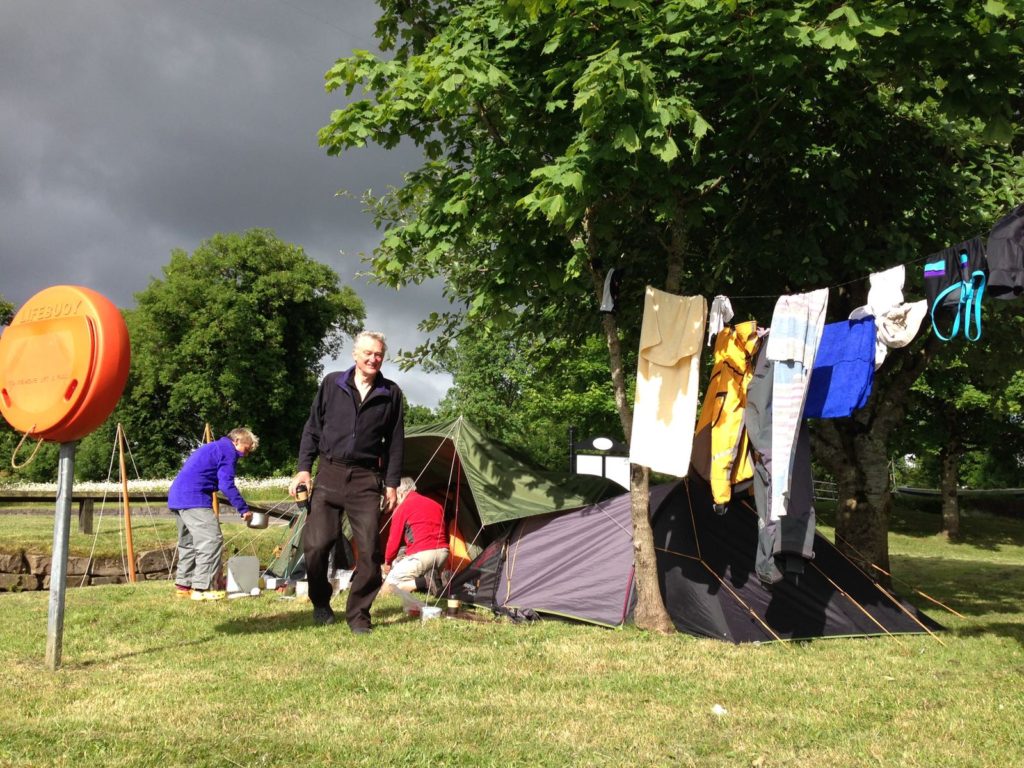
Day 13 21/06/2018 12.9 miles
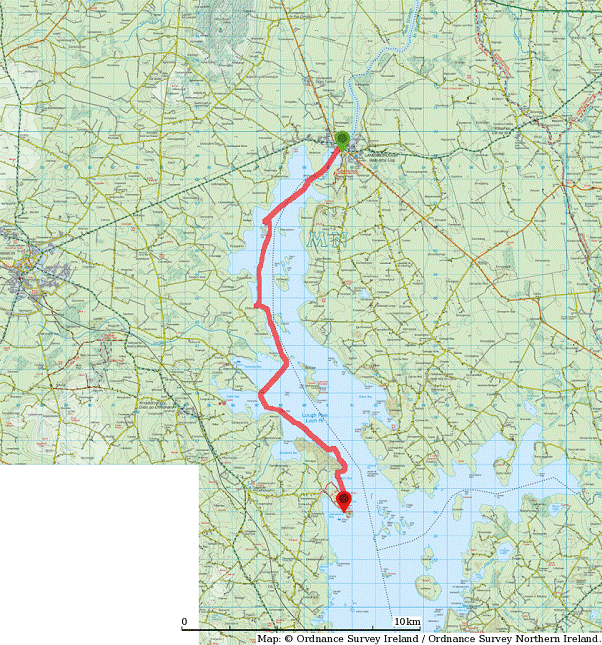
The longest day of the year. We started with a swim in the river and then a short trip into Lanesborough for provisions.
We got away at 10.30am with a broad reach before a force 3 NNW wind down out of the river and into the wide open sea of Lough Ree.
We hove-to and took in a reef at Barbara’s suggestion, as the wind increased out of the shelter of the land then ran on at 5-6 knots heading over to stay nearer to the West shore to get a bit of a lee from the developing swell.
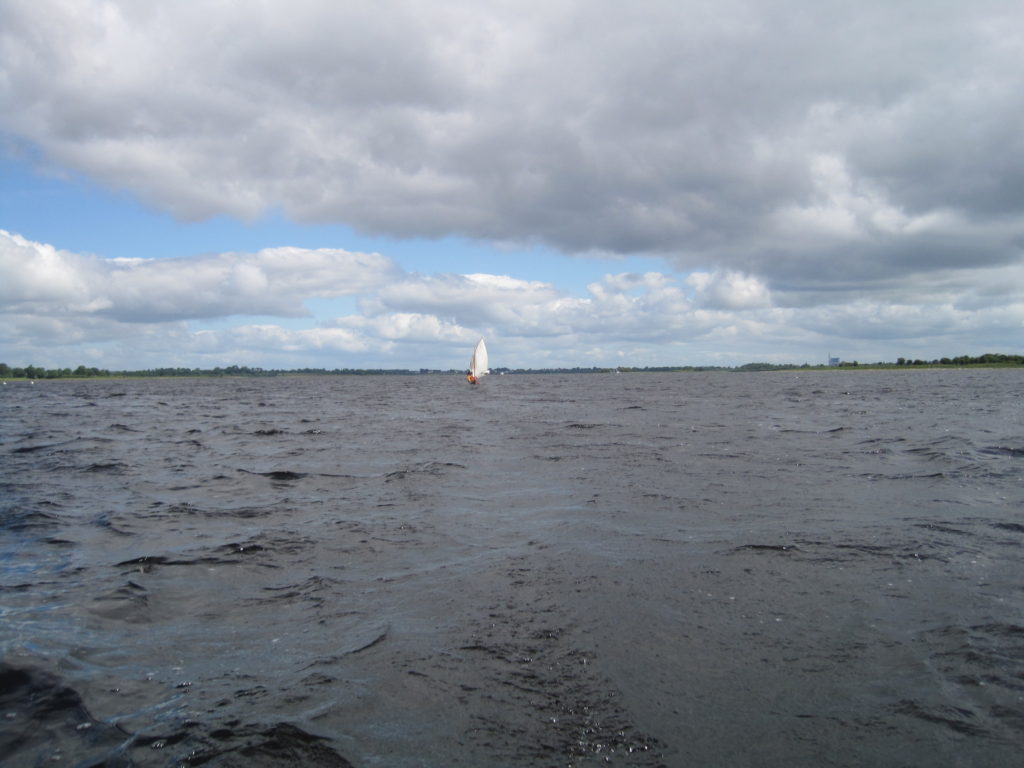
We cut inside a small island but hit a rock and found ourselves in an area of shallows with lots of rocks. We hit a few more trying to find a way out.
Further on, we stopped within the hook of a small rocky bay for a brew-up but with no shelter from the wind.
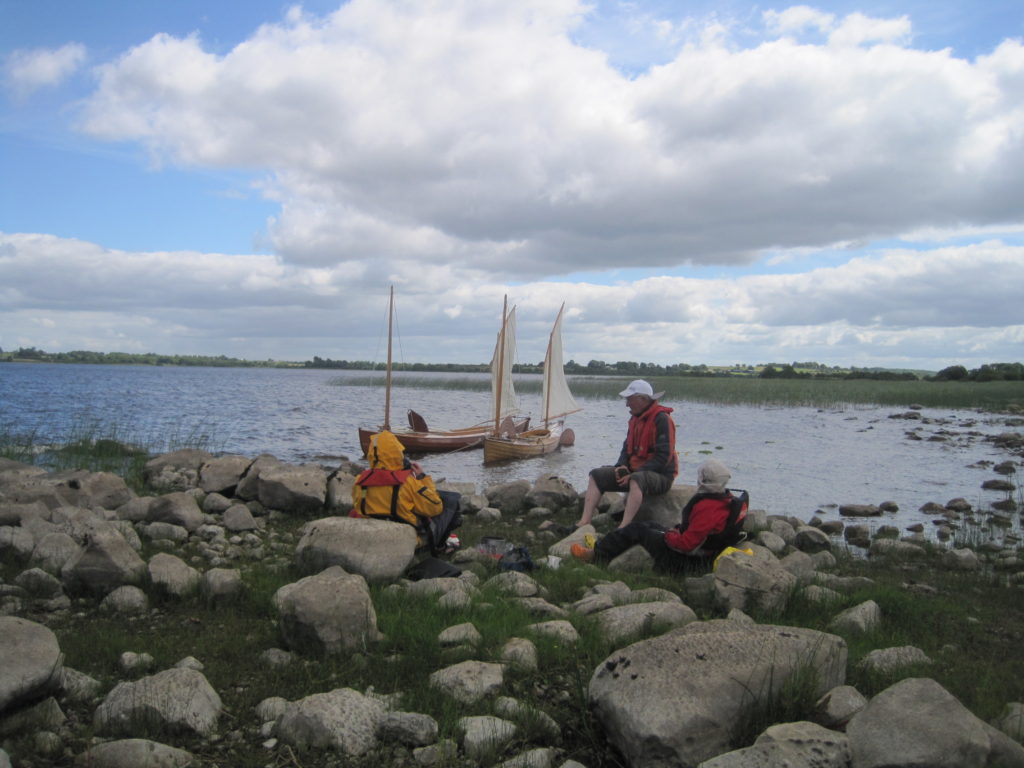
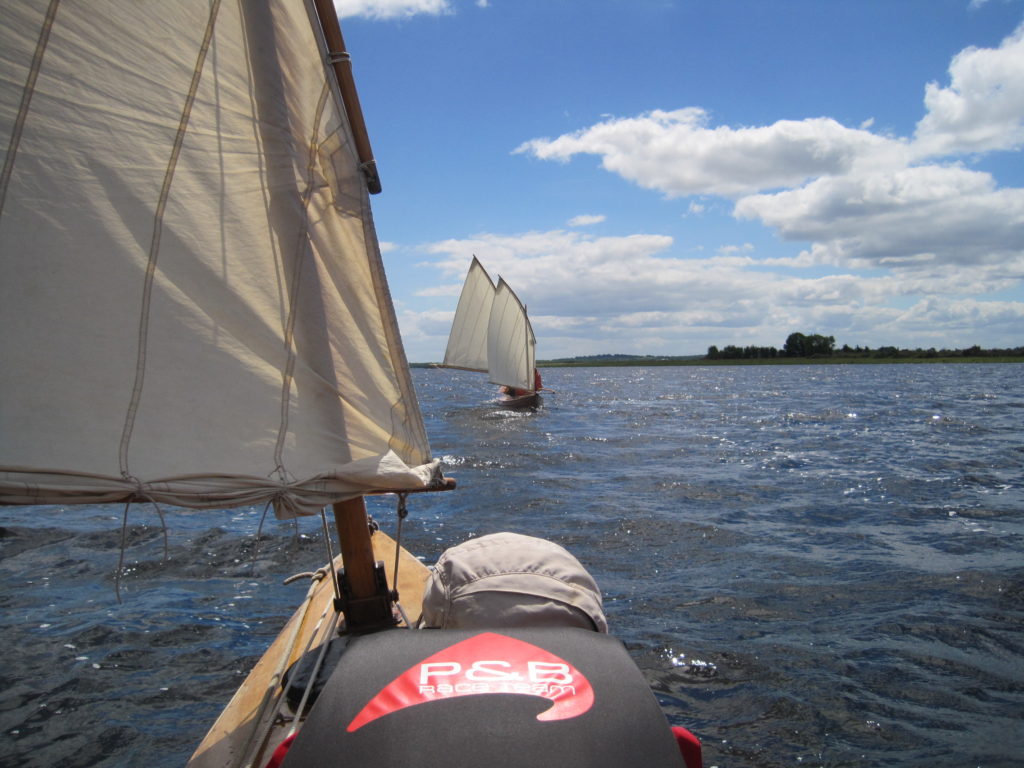
On again, making good time and close to the Western shore for some shelter, cutting across the bays until we reached a section which was running SE, almost parallel to the wind direction, where we were exposed to a gradually increasing fetch.
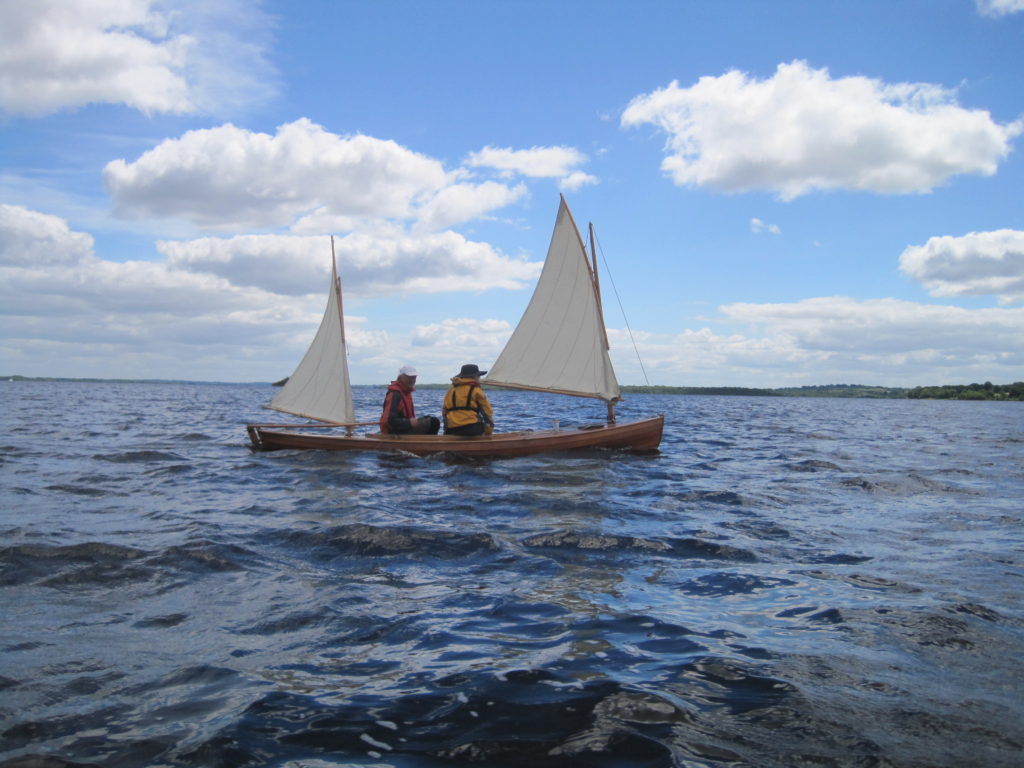
Jeremy and Barbara inadvertently capsized but they got the canoe back up and bailed out quite smoothly.
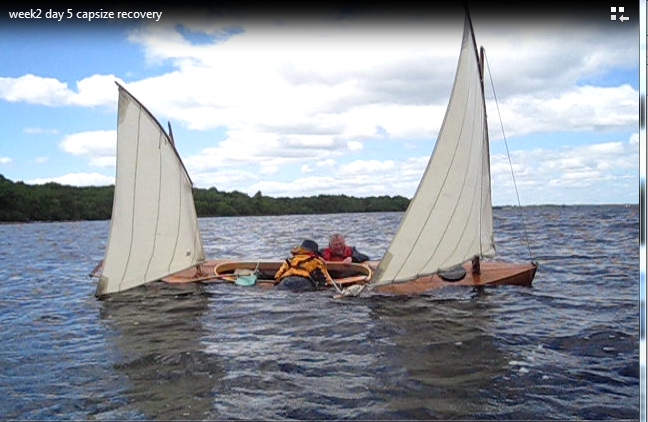
We went on round the next point into smooth water to find a place to stop and have lunch. We built a small fire and they changed into dry clothes.
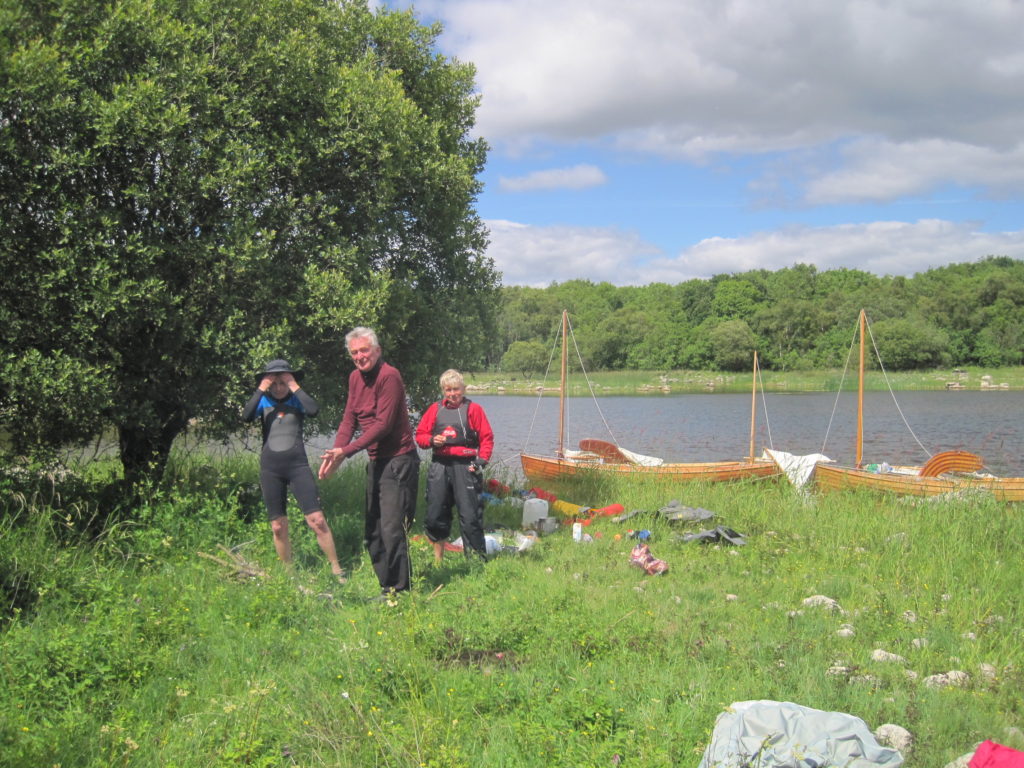
After lunch we ran the short distance across the bay and into what is called “Safe Harbour” on the maps, this was our planned destination for the day. It is an ideal spot, set on the Warren peninsular with shelter, short grass and a ruined castle, church and windmill. I had worried that it might be a bit of a tourist “honeypot” but we saw very few people and no other boats.
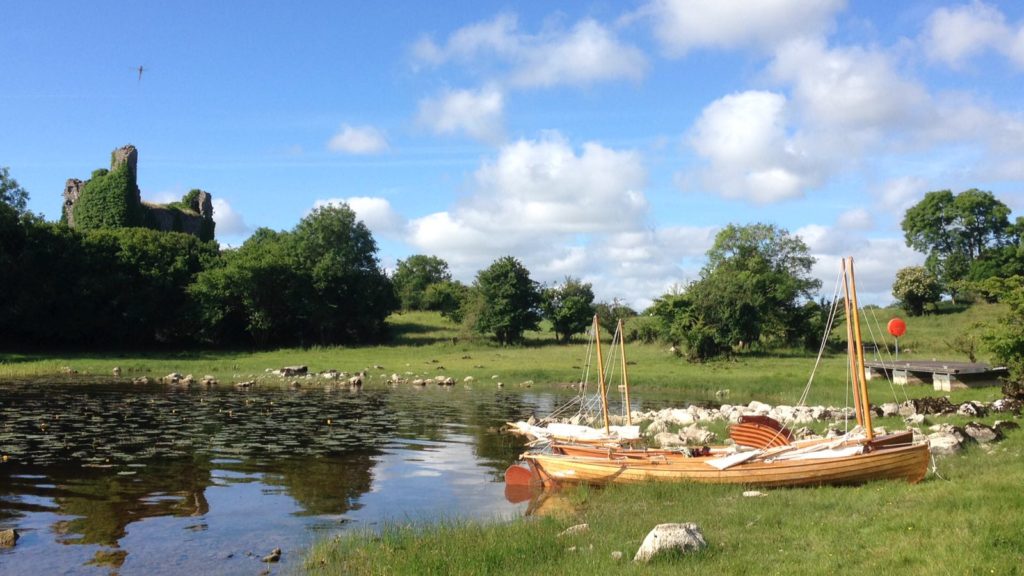
We did a bit of exploring
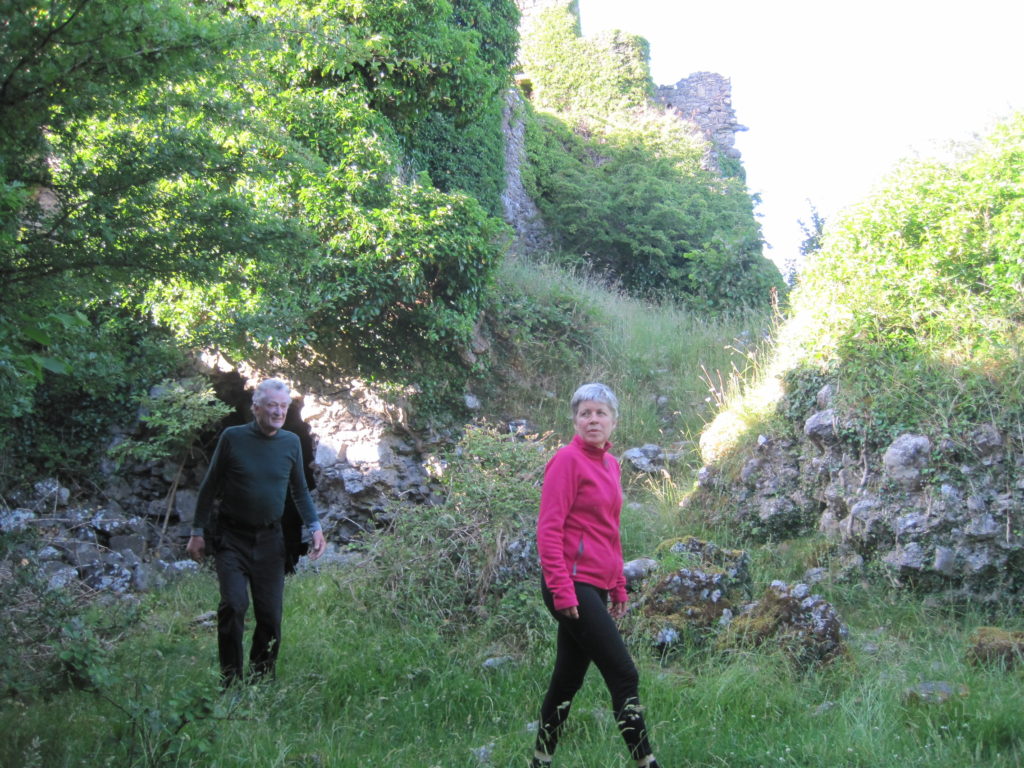
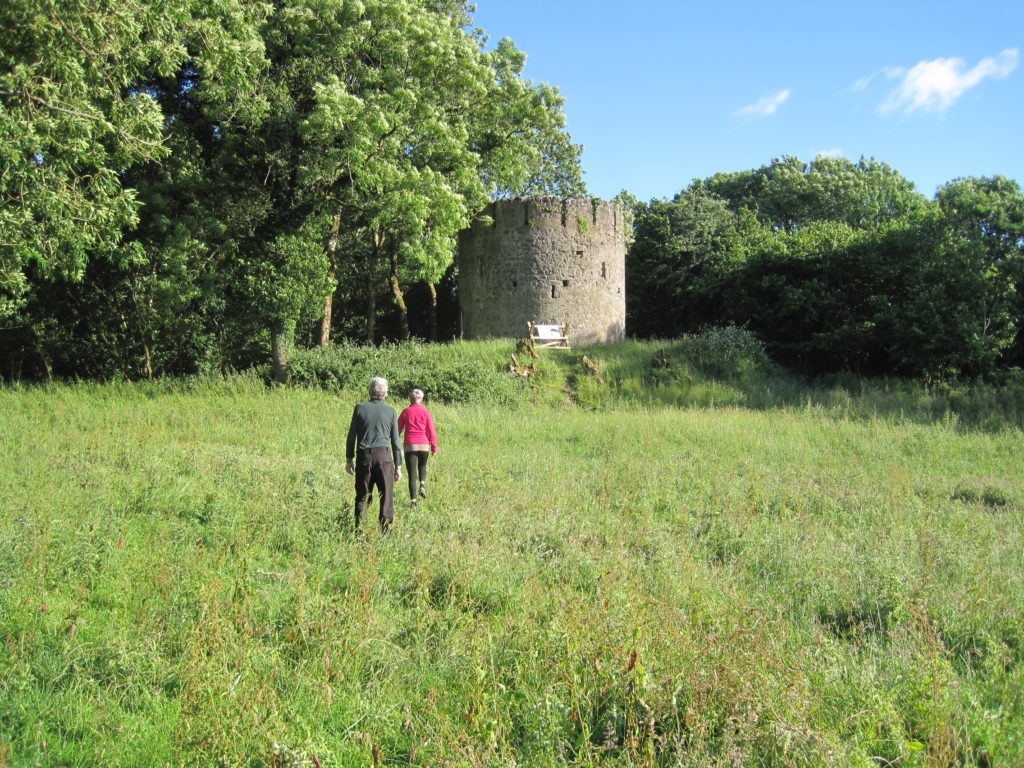
and had a pleasant afternoon resting in the sun.
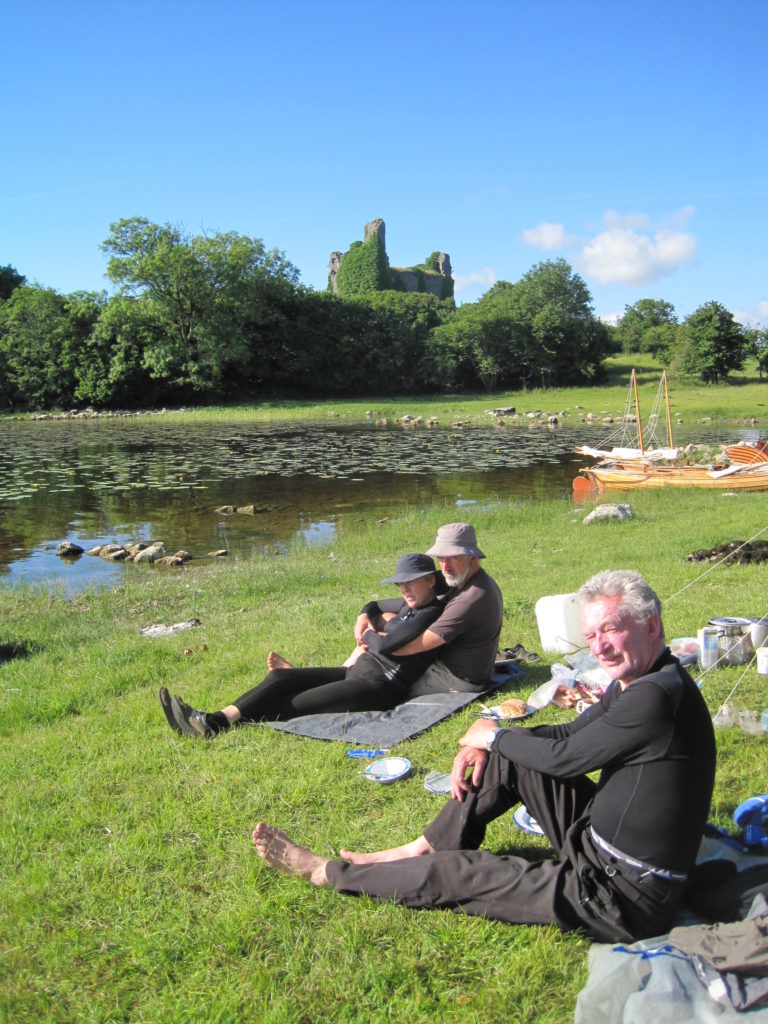
Day 14 22/06/2018 10.6 miles
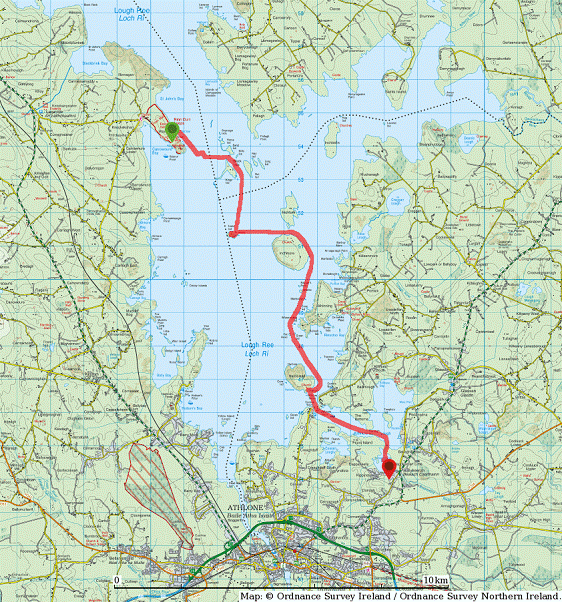
It was a fine and sunny day and we only had about 10 miles to go to reach Athlone. The wind was NNW force 2. We headed East behind King’s island and saw lots and lots of swans on the water, then down to stop off at Nun’s island which has a very small harbour at its Southern end, formed by some rough stone walls.
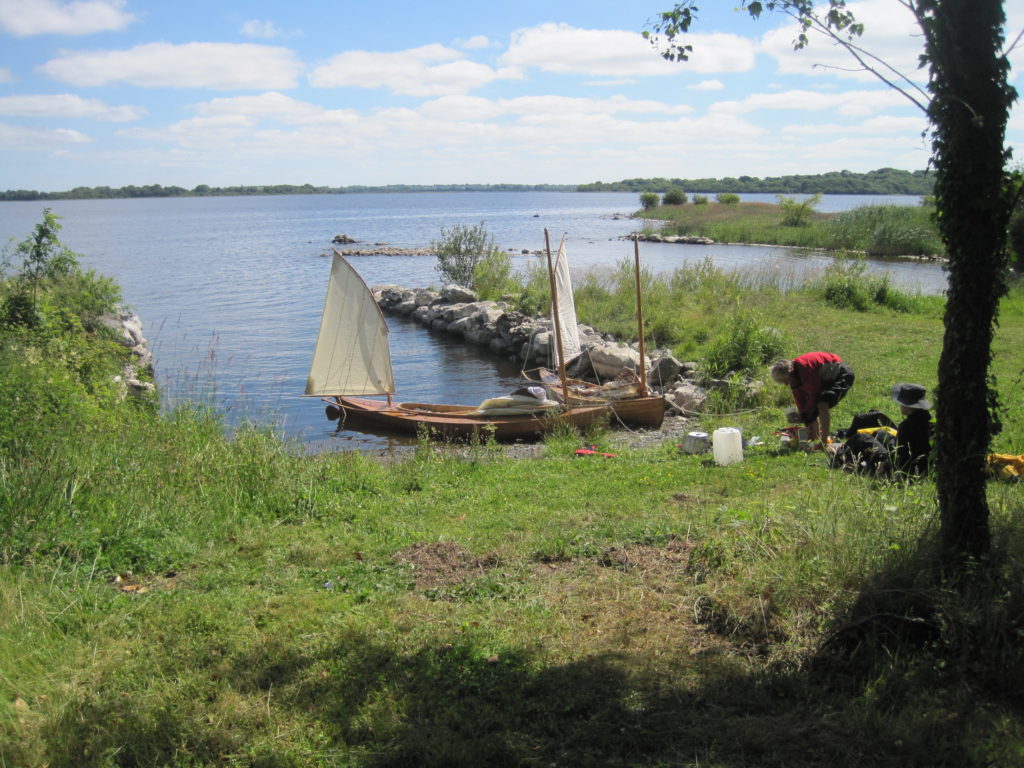
We headed East again, round Inchmore and down among a lot of rocks and small islands inshore. We finally stopped for lunch at the SE end of Hare Island close to the private Southern harbour. It was hot and windless and there were rather a lot of horseflies but otherwise it was a pleasant spot.
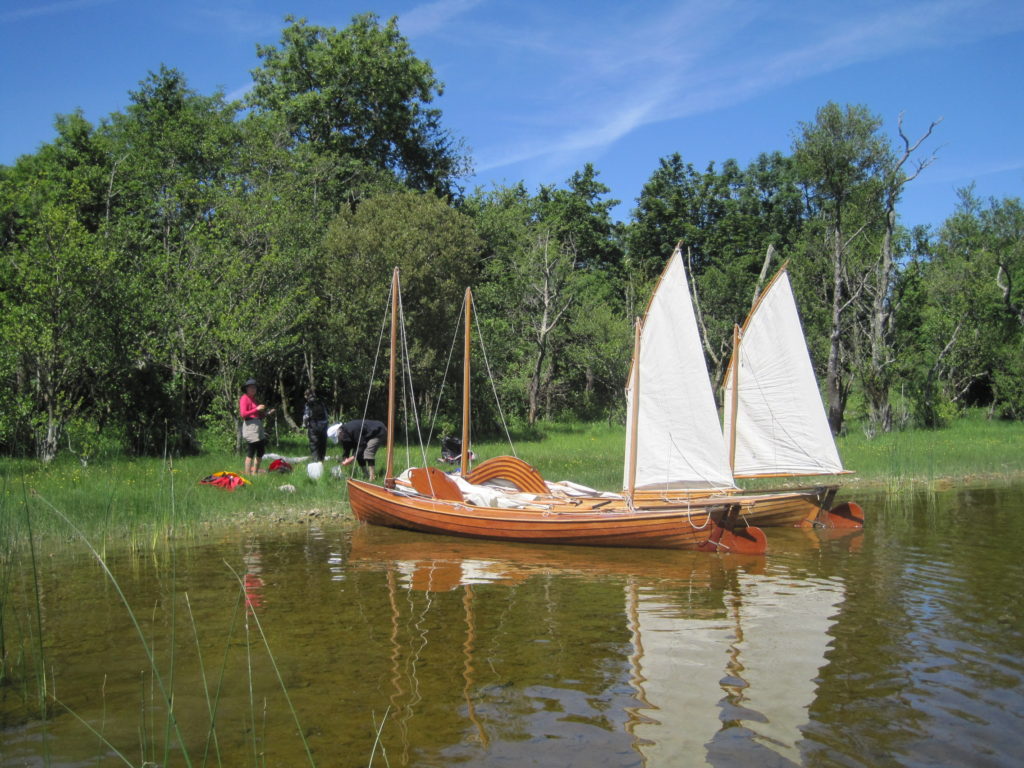
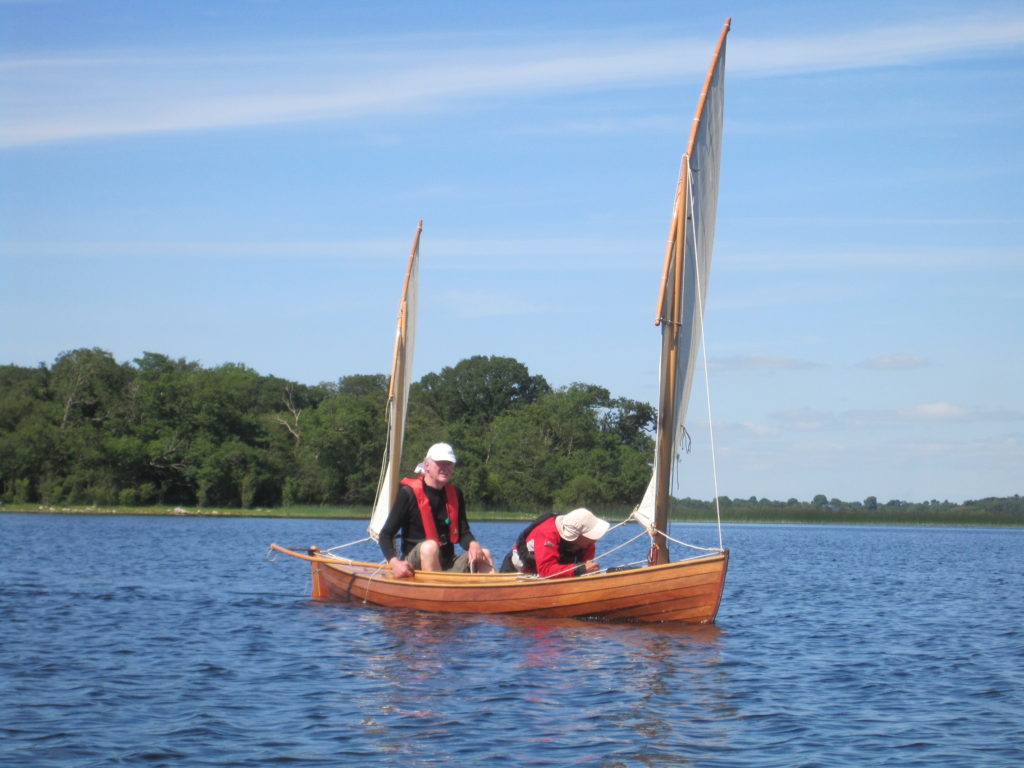
Jeremy and Rebecca sailed together in the new canoe for the final run in past Coonan Point and down the long lanes of buoys that had been laid in Killinure Lough, for a rowing race, since we came in at the end of the previous week.
We camped back at Ballykeeran campsite which was by now much more crowded.
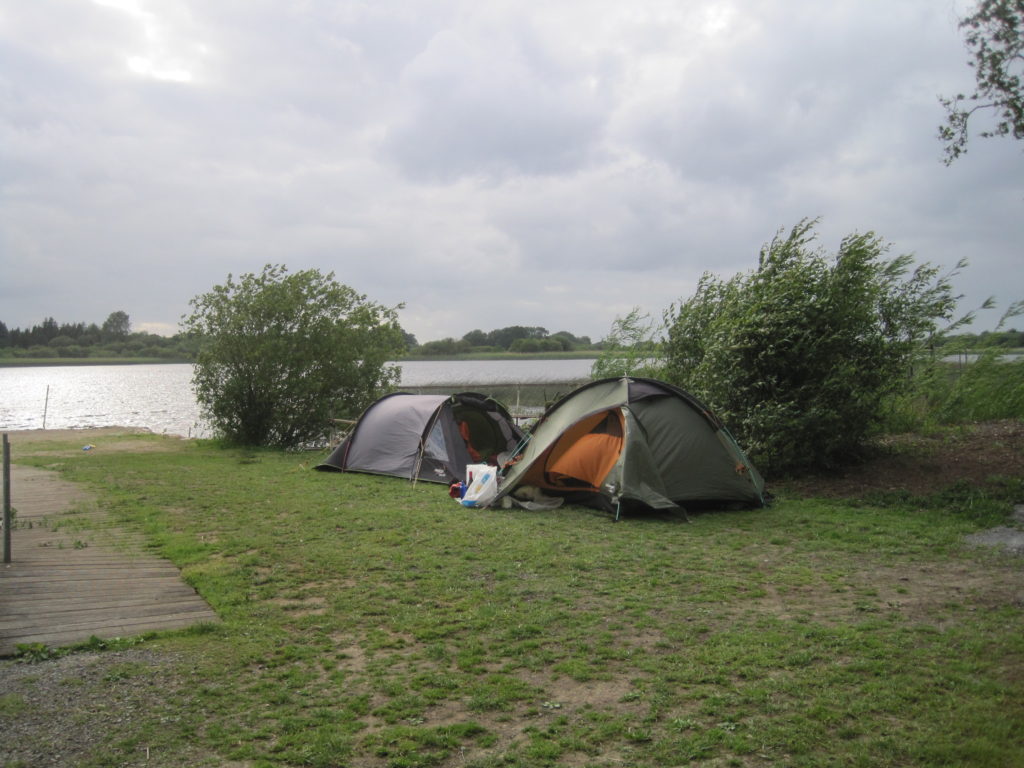
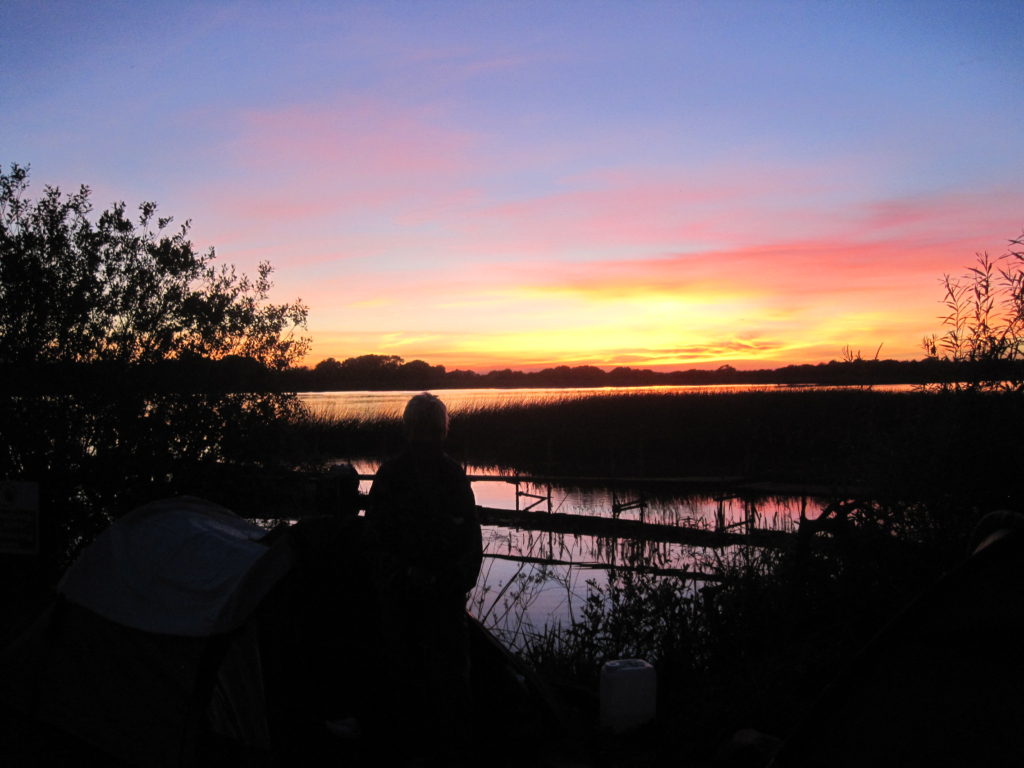
We made the final trip by bus back up to Boyle the next day to get the van and had our last night in the campsite,
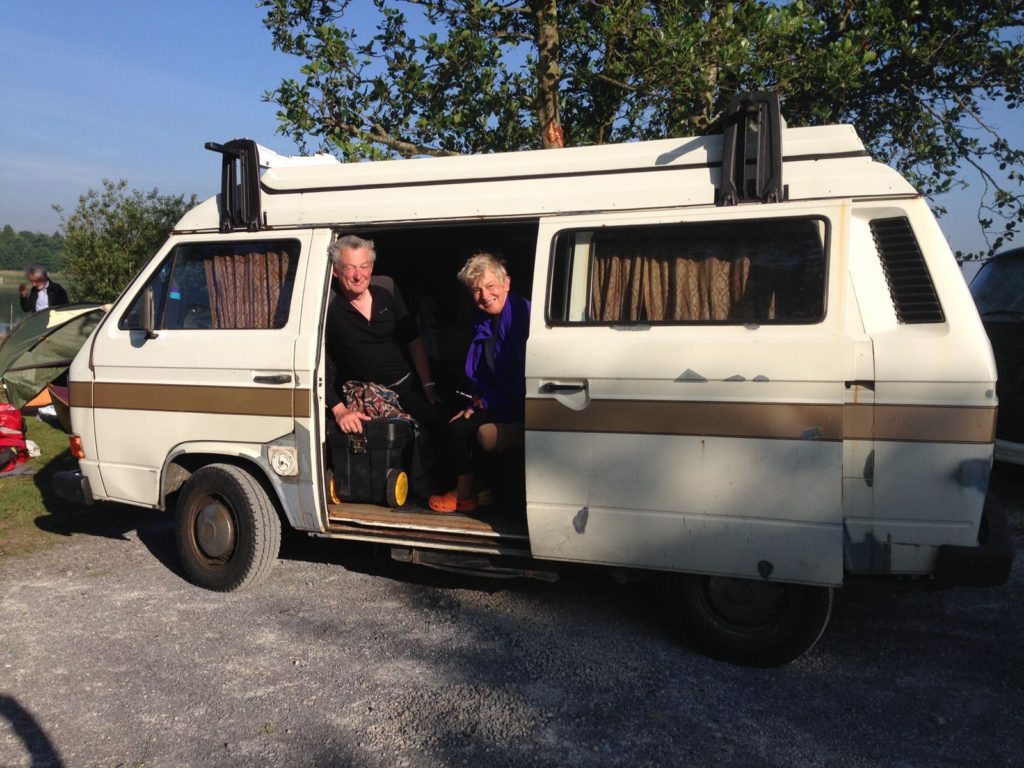
before heading back to get the ferry at Rosslare.
